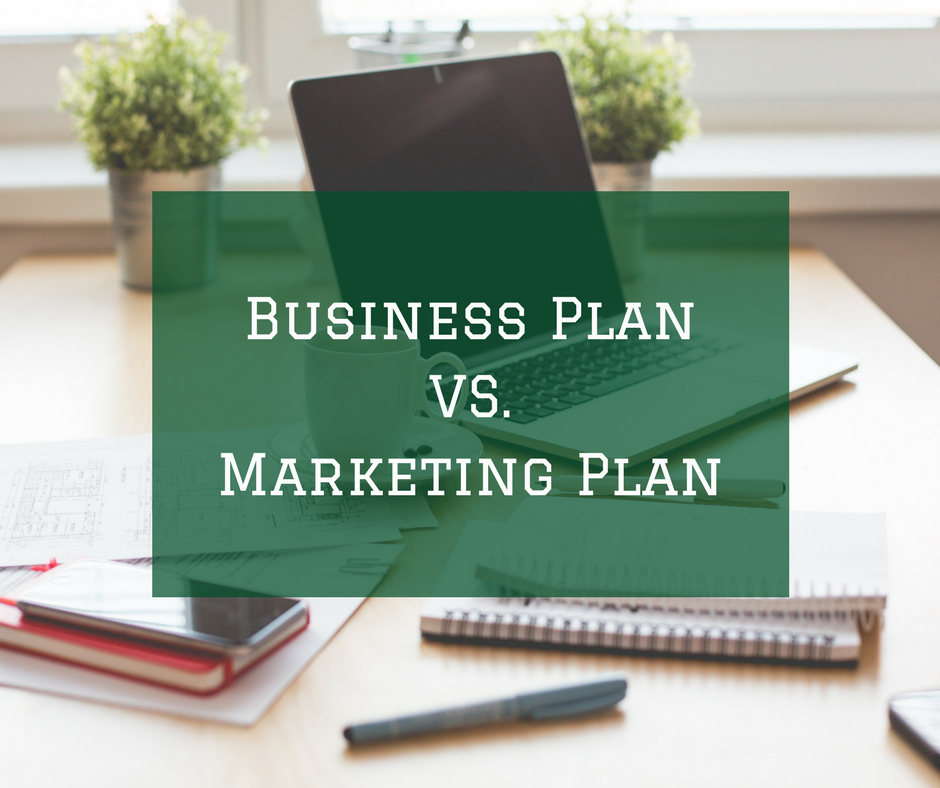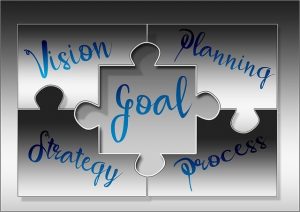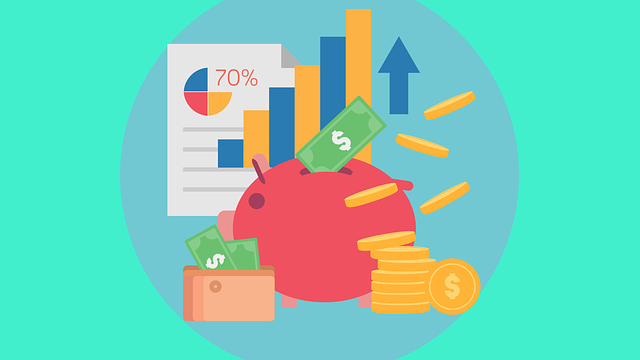
Esperto Business Plan

Le differenze tra Business Plan e Piano Marketing
Qual è la differenza tra un marketing plan e un business plan? Un business plan include un marketing plan? Perché qualcuno dovrebbe fare uno senza l’altro?
Belle domande, e dato che me le pongono spesso, ho preparato un breve articolo esplicativo
Il business plan comprende tutti gli aspetti del business
Un business plan copre l’intero business, compresa la strategia generale, i piani finanziari, i mercati target, le vendite, i prodotti e i servizi, le operazioni, e come tutti si relazionano tra loro. Un marketing plan, al contrario, si concentra sul marketing: strategia di marketing, mercati target, marketing mix, messaggistica, programmi, ecc. Il flusso di cassa è vitale per un business plan, ma di solito non è incluso in un marketing plan.

Cosa comprende un piano marketing a differenza di un business plan
Un piano marketing comprende le seguenti parti
a. un analisi mercato approfondita
b. un analisi dei segmenti dei clienti target (a chi vendiamo)
c. quali sono i canali di promozione ed acquisizione della clientela
d. quali sono i canali di vendita e distribuzione dei prodotti e servizi
e. quali sono le strategie ed i canali di comunicazione
Un business plan professionale include sempre un piano marketing
Un business plan professonale include sempre la parte di marketing. L’enfasi varia, e ho visto alcuni piani che si concentrano più sul prodotto o sul servizio che sul marketing.
Quando ha senso fare solo il piano marketing
Ha senso fare un piano di marketing piuttosto che un business plan quando abbiamo le idee chiare sul business e dobbiamo concentrarci su marketing, canali di acquisizione dei clienti e canali di vendita/distributivi.
Business plan: risposte alle domande frequenti
Cos’è un business plan.
Un Business Plan è un documento che descrive in dettaglio la strategia di una azienda per raggiungere obiettivi specifici. Include piani per il marketing, le operazioni, i finanziamenti e la crescita.
Perché è importante un Business Plan?
È importante perché funge da guida per la gestione dell’azienda e come strumento di presentazione per attirare investitori o finanziamenti. Aiuta a chiarire obiettivi, strategie e potenziali ostacoli.
Quali elementi dovrebbe contenere un Business Plan?
Un Business Plan dovrebbe includere un sommario esecutivo, descrizione dell’azienda, analisi di mercato, organizzazione e gestione, linee di prodotto o servizi, marketing e vendite, richiesta di finanziamento, proiezioni finanziarie e un’appendice.
Come posso rendere il mio Business Plan SEO-friendly?
Per rendere un Business Plan SEO-friendly online, includi parole chiave pertinenti nella tua descrizione del business e nei titoli delle sezioni, pubblica riepiloghi o parti del tuo piano su blog o siti web ottimizzati per i motori di ricerca e crea contenuti correlati che indirizzino al tuo business plan o al sito web della tua azienda.
Quanto spesso dovrei aggiornare il mio Business Plan?
Dovresti rivedere e aggiornare il tuo Business Plan almeno una volta all’anno o quando ci sono cambiamenti significativi nella tua attività, nel mercato o nell’ambiente economico.
Posso usare un modello per il mio Business Plan?
Sì, i modelli possono essere un ottimo punto di partenza, ma assicurati di personalizzarlo per riflettere accuratamente la tua unica proposta di valore, il mercato target e le strategie specifiche.
Piano marketing: risposte alle domande frequenti
Cos’è un piano marketing.
Un Piano Marketing è un documento strategico che definisce le azioni di marketing di un’azienda per raggiungere obiettivi specifici entro un determinato periodo di tempo. Include analisi di mercato, target di riferimento, obiettivi, strategie, budget e metriche per misurare il successo.
Quali sono gli elementi chiave di un Piano Marketing?
Gli elementi chiave includono l’analisi SWOT (punti di forza, debolezze, opportunità, minacce), la definizione del target di mercato, gli obiettivi di marketing, le strategie per raggiungere questi obiettivi, il piano d’azione, il budget e le metriche di valutazione.
Come posso definire il mio target di mercato nel Piano Marketing?
Per definire il target di mercato, è necessario condurre ricerche di mercato per comprendere le esigenze, i desideri e i comportamenti del tuo pubblico ideale. Segmenta il mercato in base a criteri demografici, geografici, psicografici e comportamentali .
Perché è importante l’analisi SWOT in un Piano Marketing?
L’analisi SWOT aiuta a identificare i fattori interni ed esterni che possono influenzare il successo delle tue strategie di marketing. Questa analisi fornisce una base solida per prendere decisioni strategiche informate.
Come posso misurare il successo del mio Piano Marketing?
Per misurare il successo, stabilisci metriche e KPI (Indicatori Chiave di Prestazione) specifici all’inizio del piano. Questi possono includere traffico web, lead generati, tasso di conversione, ROI (ritorno sull’investimento) e altri indicatori rilevanti per i tuoi obiettivi .
Qual è il ruolo del contenuto nel Piano Marketing?
Il contenuto gioca un ruolo cruciale nel Piano Marketing, aiutando a costruire il marchio, a coinvolgere il target di mercato e a convertire i potenziali clienti. Una strategia di content marketing efficace dovrebbe essere parte integrante del piano, con contenuti ottimizzati per SEO per migliorare la visibilità online .
Differenze tra business plan e piano marketing: conclusioni

In conclusione si redige uno specifico piano di marketing quando si vuole approfondire la parte di mercato, acquisizione dei clienti e vendita. Nel business plan professionale questa parte è apprfondita ma spesso le aziende non dispongono di un piano professionale e quindi non hanno una strategia di marketing generata da un analisi adeguata, per questo motivo spesso hanno un business plan adeguato ma con la parte di marketing inadeguata e quindi si dedicano a sviluppare un piano marketing approfondito.
Hai bisogno di un supporto per un piano marketing, un business plan o vuoi un semplice parere sulle possibilità di migliorare il tuo business?
Se hai bisogno di supporto per analizzare il tuo business e capire come migliorarlo, oppure vuoi un aiuto per lo sviluppo della tua impresa contattami senza impegno per una prima consulenza gratuita e scopri come posso aiutarti ad aggiungere valore alla tua impresa
Se vuoi altro materiale consulta il mio canale youtube su business plan, ricerche e analisi di mercato, piani strategici e modelli di business.
Approfondisci con gli articoli correlati!
Link Esterni Utili
Business plan: definizione
Piano marketing: (libro)

Hai bisogno di aiuto per la TUA impresa o startup ?
Hai trovato interessante questo articolo? Condividilo con i tuoi contatti!
Se desideri darmi un feedback o raccontarmi le tue esperienze contattami, parleremo del tuo progetto e di come renderlo più efficace.
Segui i miei contenuti anche sui canali:
In questo articolo...
Articoli correlati, il processo di pianificazione strategica spiegato in modo semplice, il settore fintech, piano operativo aziendale, idee di business: la guida definitiva, come trovare i competitors: guida pratica, liquidità aziendale: guida pratica (2023), come pianificare una strategia aziendale efficace (2024), piani attestati di risanamento, piano attestato di risanamento, scegli lo specialista dei business plan.
Richiesta Preventivo
Compila il modulo per pianificare subito una call con me e capire se possiamo collaborare alla stesura del tuo business plan.
Seguo molto da vicino pochissime imprese, pertanto le disponibilità sono limitate.
Preferisci un contatto diretto?
Ultimi Articoli
Dal blog di Esperto Business Plan

Cosa sono gli OKR

Obiettivi SMART aziendali: cosa sono, esempi pratici e modalità di implementazione

Come presentare una idea imprenditoriale
I miei canali
ANDREA DAMA
ESPERTO in BUSINESS PLAN
In circa 20 anni di esperienza lavorativa ho acquisito esperienze in ambito commerciale (6 anni ) controllo di gestione ( 6 anni ) supporto alla direzione aziendale, diventando in seguito consulente direzionale e manager a P IVA ( 10 anni ) affrontando professionalmente situazioni eterogenee in settori e dimensioni aziendali di ogni tipo.
Lavorando e studiando ho ottenuto un diploma di perito tecnico, una laurea breve in Amministrazione Aziendale, una laurea in Economia Aziendale ed un Master in Finance e Merchant Banking (operazioni straordinarie, private equity-venture capital, start up).
Questo background mi permette di avere una visione a 360° delle problematiche aziendali, garantendo una notevole efficacia in fase di analisi, di pianificazione e di svolgimento delle attività operative.
Value Creation di Andrea Dama P IVA 02257010021 – Milano – Piazza IV Novembre 4
PRIVACY POLICY

Hai bisogno di aiuto?
Compila qui per ottenere una consulenza gratuita da 30 minuti.
We earn commissions if you shop through the links below. Read more
Business Plan vs. Marketing Plan
Back to Business Plans
Written by: Carolyn Young
Carolyn Young is a business writer who focuses on entrepreneurial concepts and the business formation. She has over 25 years of experience in business roles, and has authored several entrepreneurship textbooks.
Edited by: David Lepeska
David has been writing and learning about business, finance and globalization for a quarter-century, starting with a small New York consulting firm in the 1990s.
Published on March 3, 2023 Updated on December 11, 2023

Starting a business usually requires both a business plan and a marketing plan. The first has many components, including a marketing section, and covers all facets of the business. The second is essentially an expanded and more detailed version of the marketing section of your business plan.
Both are dynamic documents that will change over time as you learn more about your business. This guide lays out all the details of what goes into a business plan and what is in a marketing plan.
- Business Plan Components
A business plan has eight essential components .
1. Executive Summary
The executive summary opens your business plan, but it’s the section you’ll write last . It summarizes the key points and highlights the most important aspects of your plan. Often investors and lenders will only read the executive summary; if it doesn’t capture their interest they’ll stop reading, so it’s important to make it as compelling as possible.
The components should include:
- The business opportunity – what problem are you solving in the market?
- Your idea, meaning the product or service you’re planning to offer, and why it solves the problem in the market better than other solutions.
- The history of the business so far – what have you done to this point? When you’re just getting started, this may be nothing more than coming up with the idea, choosing a business name , and forming a business entity.
- A summary of the industry, market size, your target customers, and the competition.
- A strong statement about how your company is going to stand out in the market – what will be your competitive advantage?
- A list of specific goals that you plan to achieve in the short term, such as developing your product, launching a marketing campaign, or hiring a key person.
- A summary of your financial plan including cost and sales projections and a break-even analysis.
- A summary of your management team, their roles, and the relevant experience that they have to serve in those roles.
- Your “ask”, if applicable, meaning what you’re requesting from the investor or lender. You’ll include the amount you’d like and how it will be spent, such as “We are seeking $50,000 in seed funding to develop our beta product”.
Remember that if you’re seeking capital, the executive summary could make or break your venture. Take your time and make sure it illustrates how your business is unique in the market and why you’ll succeed.
The executive summary should be no more than two pages long, so it’s important to capture the reader’s interest from the start.
2. Company Description/Overview
In this section, you’ll detail your full company history, such as how you came up with the idea for your business and any milestones or achievements.
You’ll also include your mission and vision statements. A mission statement explains what you’d like your business to achieve, its driving force, while a vision statement lays out your long-term plan in terms of growth.
A mission statement might be “Our company aims to make life easier for business owners with intuitive payroll software”, while a vision statement could be “Our objective is to become the go-to comprehensive HR software provider for companies around the globe.”
In this section, you’ll want to list your objectives – specific short-term goals. Examples might include “complete initial product development by ‘date’” or “hire two qualified sales people” or “launch the first version of the product”.
It’s best to divide this section into subsections – company history, mission and vision, and objectives.
3. Products or Services Offered
Here you’ll go into detail about what you’re offering, how it solves a problem in the market, and how it’s unique. Don’t be afraid to share information that is proprietary – investors and lenders are not out to steal your ideas.
Also specify how your product is developed or sourced. Are you manufacturing it or does it require technical development? Are you purchasing a product from a manufacturer or wholesaler?
You’ll also want to specify how you’ll sell your product or service. Will it be a subscription service or a one-time purchase? What is your target pricing? On what channels do you plan to sell your product or service, such as online or by direct sales in a store?
Basically, you’re describing what you’re going to sell and how you’ll make money.
4. Market Analysis
The market analysis is where you’re going to spend most of your time because it involves a lot of research. You should divide it into four sections.
Industry analysis
Research and describe exactly what’s happening in your industry, such as growth rate, market size, and current trends. Where is the industry predicted to be in 10 years? Provide links to your sources.
Detail your company’s place in the market. Will your product fit a certain niche? Is there a sub-industry your company will fit into? How will you keep up with industry changes?
Competitor analysis
Now you’ll dig into your competition. Detail your main competitors and how they differentiate themselves in the market. For example, one competitor may advertise convenience while another touts superior quality. Also highlight your competitors’ weaknesses.
Next, explain how you’ll stand out. Detail your competitive advantages and how you’ll sustain them. This section is extremely important and will be a focus for investors and lenders.
Target market analysis
Here you’ll describe your target market and whether it’s different from your competitors’. For example, maybe you have a younger demographic in mind?
You’ll need to know more about your target market than demographics, though. You’ll want to explain the needs and wants of your ideal customers, how your offering solves their problem, and why they will choose your company.
You should also lay out where you’ll find them, where to place your marketing and where to sell your products. Learning this kind of detail requires going to the source – your potential customers. You can do online surveys or even in-person focus groups.
Your goal will be to uncover as much about these people as possible. When you start selling, you’ll want to keep learning about your customers. You may end up selling to a different target market than you originally thought, which could lead to a marketing shift.
SWOT analysis
SWOT stands for strengths, weaknesses, opportunities, and threats, and it’s one of the more common and helpful business planning tools.
First describe all the specific strengths of your company, such as the quality of your product or some unique feature, such as the experience of your management team. Talk about the elements that will make your company successful.
Next, acknowledge and explore possible weaknesses. You can’t say “none”, because no company is perfect, especially at the start. Maybe you lack funds or face a massive competitor. Whatever it is, detail how you will surmount this hurdle.
Next, talk about the opportunities your company has in the market. Perhaps you’re going to target an underserved segment, or have a technology plan that will help you surge past the competition.
Finally, examine potential threats. It could be a competitor that might try to replicate your product or rapidly advancing technology in your industry. Again, discuss your plans to handle such threats if they come to pass.
5. Marketing and Sales Strategies
Now it’s time to explain how you’re going to find potential customers and convert them into paying customers.
Marketing and advertising plan
When you did your target market analysis, you should have learned a lot about your potential customers, including where to find them. This should help you determine where to advertise.
Maybe you found that your target customers favor TikTok over Instagram and decided to spend more marketing dollars on TikTok. Detail all the marketing channels you plan to use and why.
Your target market analysis should also have given you information about what kind of message will resonate with your target customers. You should understand their needs and wants and how your product solves their problem, then convey that in your marketing.
Start by creating a value proposition, which should be no more than two sentences long and answer the following questions:
- What are you offering
- Whose problem does it solve
- What problem does it solve
- What benefits does it provide
- How is it better than competitor products
An example might be “Payroll software that will handle all the payroll needs of small business owners, making life easier for less.”
Whatever your value proposition, it should be at the heart of all of your marketing.
Sales strategy and tactics
Your sales strategy is a vision to persuade customers to buy, including where you’ll sell and how. For example, you may plan to sell only on your own website, or you may sell from both a physical location and online.
On the other hand, you may have a sales team that will make direct sales calls to potential customers, which is more common in business-to-business sales. Sales tactics are more about how you’re going to get them to buy after they reach your sales channel.
Even when selling online, you need something on your site that’s going to get them to go from a site visitor to a paying customer. By the same token, if you’re going to have a sales team making direct sales, what message are they going to deliver that will entice a sale?
It’s best for sales tactics to focus on the customer’s pain point and what value you’re bringing to the table, rather than being aggressively promotional about the greatness of your product.
Pricing strategy
Pricing is not an exact science and should depend on several factors. First, consider how you want your product or service to be perceived in the market. If your differentiator is to be the lowest price, position your company as the “discount” option.
Think Walmart, and price your products lower than the competition. If, on the other hand, you want to be the Mercedes of the market, then you’ll position your product as the luxury option.
Of course you’ll have to back this up with superior quality, but being the luxury option allows you to command higher prices. You can, of course, fall somewhere in the middle, but the point is that pricing is a matter of perception.
How you position your product in the market compared to the competition is a big factor in determining your price. Of course, you’ll have to consider your costs, as well as competitor prices. Obviously, your prices must cover your costs and allow you to make a good profit.
Whatever pricing strategy you choose, you’ll justify it in this section of your plan.
6. Operations and Management
This section is the real nuts and bolts of your business – how it operates on a day-to-day basis and who is operating it. Again, this section should be divided into subsections.
Operational plan
Your plan of operations should be specific , detailed and mainly logistical. Who will be doing what on a daily, weekly, and monthly basis? How will the business be managed and how will quality be assured? Be sure to detail your suppliers and how and when you’ll order raw materials.
This should also include the roles that will be filled and the various processes that will be part of everyday business operations. Just consider all the critical functions that must be handled for your business to be able to operate on an ongoing basis.
Technology plan
If your product involves technical development, you’ll describe your tech development plan with specific goals and milestones. The plan will also include how many people will be working on this development, and what needs to be done for goals to be met.
If your company is not a technology company, you’ll describe what technologies you plan to use to run your business or make your business more efficient. It could be process automation software, payroll software, or just laptops and tablets for your staff.
Management and organizational structure
Now you’ll describe who’s running the show. It may be just you when you’re starting out, so you’ll detail what your role will be and summarize your background. You’ll also go into detail about any managers that you plan to hire and when that will occur.
Essentially, you’re explaining your management structure and detailing why your strategy will enable smooth and efficient operations.
Ideally, at some point, you’ll have an organizational structure that is a hierarchy of your staff. Describe what you envision your organizational structure to be.
Personnel plan
Detail who you’ve hired or plan to hire and for which roles. For example, you might have a developer, two sales people, and one customer service representative.
Describe each role and what qualifications are needed to perform those roles.
7. Financial Plan
Now, you’ll enter the dreaded world of finance. Many entrepreneurs struggle with this part, so you might want to engage a financial professional to help. A financial plan has five key elements.
Startup Costs
Detail in a spreadsheet every cost you’ll incur before you open your doors. This should determine how much capital you’ll need to launch your business.
Financial projections
Creating financial projections, like many facets of business, is not an exact science. If your company has no history, financial projections can only be an educated guess.
First, come up with realistic sales projections. How much do you expect to sell each month? Lay out at least three years of sales projections, detailing monthly sales growth for the first year, then annually thereafter.
Calculate your monthly costs, keeping in mind that some costs will grow along with sales. Once you have your numbers projected and calculated, use them to create these three key financial statements:
- Profit and Loss Statement , also known as an income statement. This shows projected revenue and lists all costs, which are then deducted to show net profit or loss.
- Cash Flow Statement. This shows how much cash you have on hand at any given time. It will have a starting balance, projections of cash coming in, and cash going out, which will be used to calculate cash on hand at the end of the reporting period.
- Balance Sheet. This shows the net worth of the business, which is the assets of the business minus debts. Assets include equipment, cash, accounts receivables, inventory, and more. Debts include outstanding loan balances and accounts payable.
You’ll need monthly projected versions of each statement for the first year, then annual projections for the following two years.
Break-even analysis
The break-even point for your business is when costs and revenue are equal. Most startups operate at a loss for a period of time before they break even and start to make a profit. Your break-even analysis will project when your break-even point will occur, and will be informed by your profit and loss statement.
Funding requirements and sources
Lay out the funding you’ll need, when, and where you’ll get it. You’ll also explain what those funds will be used for at various points. If you’re in a high-growth industry that can attract investors, you’ll likely need various rounds of funding to launch and grow.
Key performance indicators (KPIs)
KPIs measure your company’s performance and can determine success. Many entrepreneurs only focus on the bottom line, but measuring specific KPIs helps find areas of improvement. Every business has certain crucial metrics.
If you sell only online, one of your key metrics might be your visitor conversion rate. You might do an analysis to learn why just one out of ten site visitors makes a purchase. Perhaps the purchase process is too complicated or your product descriptions are vague.
Learning why your conversion rate is low gives you a chance to improve it and boost sales.
8. Appendices
In the appendices you can attach documents such as manager resumes or other documents that support your business plan.
- Marketing Plan Components
A marketing plan, as mentioned above, is a more detailed version of the marketing strategy section of your business plan. It includes six components.
1. Marketing Objectives
Start by detailing your short-term marketing goals. This could be “Reach 10,000 monthly site visitors by next year’” or “Acquire 500 new customers by May”. Be sure to set clear and attainable goals so your marketing team understands its targets.
2. Target Market
You’ll want to document exactly who you’re trying to reach with your marketing. You should’ve already done a target market analysis for your business plan, and you’ll use it here.
What Problem Are You Solving?
Whatever your product or service, it needs to solve a problem in the market. So, ask yourself, what problem does my business solve? Next, consider who faces that problem.
A plumbing company, for instance, solves the problem of broken pipes. Who deals with that problem? Homeowners and property owners and managers.
Depending on your business, it may not be obvious who has the problem you’re solving. If it’s not clear, do more research. Either way, knowing who faces the problem you’re solving is just the beginning. You need to know much more about your target customers.
Research Your Market and Competition
Now, dig into your market with some online research. Do some Google and Bing searches about your target demographic, where they shop and live, what appeals to them and so on.
Next, check out your competition to see who they’re marketing to. It may help to study their marketing through the eyes of a consumer.
What need do they fill? Who would find their marketing appealing? Where do they advertise? If their ads appear on TikTok, they’re looking to attract a younger market.
This market research should give you a general profile of your target market – but that’s not enough.
Talk to Potential Customers
To learn more about your target market, go straight to the source. The best way to learn their needs and wants, why they’d buy your product and how they’ll use it, is to ask them via a phone or email survey.
If you’ve yet to make any sales, it’s probably best to post your survey online then promote it on social media by offering a small reward, such as a gift certificate. Just make sure you ask the right questions to get the information you’re looking for.
You can also hold in-person focus groups and offer your goods at a discount for participants.
Create Customer Profiles
Now it’s time to build detailed profiles of your target customers. You may have found that your product will appeal to more than one group of people. These are called customer segments, and all your segments together make up your target market.
Create descriptions of each group with all the information you’re learned. These profiles should include:
- Pain points: the problems they have that you’re solving
- Benefits your product provides
- Their interests: what do they care about?
- Buying patterns: where do they shop?
- Age, location, income level, other factual information
3. Value Proposition
Now you can use these profiles to craft a value proposition that will serve as the foundation of all your marketing. You may need to devise more than one value proposition to target different segments.
Your value propositions should be no more than two sentences long and answer the following questions:
- How is it better than competitors’ products
An example might be “Payroll software that handles all the payroll needs of small business owners, making life easier for less.”
Remember that you need to align your value proposition with the wishes of your target market.
4. Marketing Activities
Now you’ll layout the specific marketing activities that you plan to conduct. Your target market analysis should have told you where you’re most likely to find potential customers, so if you found out that your potential customers use TikTok, you can post and run ads there.
You’ll want to only perform the marketing activities that are most likely to reach your potential customers so that you’re not wasting marketing dollars. If getting found online is important to you, focus on search engine optimization (SEO) and social media ads.
Make the activities as specific as possible, such as “Run a TikTok ad promoting ____ for three months.”
5. Marketing Budget
Now, determine what these activities will cost and set a budget. When you go through this process, you may find that you need to adjust your marketing to stick to the budget you can afford.
Your marketing budget needs to align with your goals. If one of your goals is to obtain 500 new customers, which will generate $10,000 in revenue, you can’t spend more than that on marketing. You have to make sure you’re getting a good return on your investment, or at least breaking even.
Now you’ll determine your key performance indicators (KPIs) to gauge the success of your marketing.
If you sell only online, one of your key marketing metrics might be your visitor conversion rate. You might do an analysis to learn why just one out of ten site visitors makes a purchase.
Perhaps the purchase process is too complicated or your product descriptions are vague. The point is, learning why your conversion rate is low gives you a chance to improve it and boost sales.
Similarly, if you’re not getting enough site visitors, you may need to revisit your SEO strategies.
A business plan outlines the overall mission, objectives, and strategies of a business, encompassing aspects like operations, finances, and organizational structure.
In contrast, a marketing plan focuses specifically on strategies and tactics to promote products or services, detailing target audiences, promotional methods, and market positioning.
While the business plan provides a comprehensive view of the entire business, the marketing plan hones in on attracting and retaining customers.
Leave a Reply Cancel reply
Your email address will not be published. Required fields are marked *
Save my name, email, and website in this browser for the next time I comment.
Subscribe to Our Newsletter
Featured resources.

Crafting the Perfect Business Plan: A Deep Dive with Upmetrics’ Vinay Kevadiya
Carolyn Young
Published on October 13, 2023
In the first segment of our conversation with Vinay Kevadiya, the visionary behind Upmetrics, we explored the platform’s origins and itsunique ...

LivePlan Software Review
Published on September 15, 2023
When you’re starting a business, a business plan is essential whether you’re going to obtain financing or not. Creating a business plan helpsyou ...

What to Include in Your Business Plan Appendix?
Published on September 13, 2023
Launching a business involves countless tasks, and one of the crucial early hurdles is writing a business plan. Many entrepreneurs who aren’tlooki ...
No thanks, I don't want to stay up to date on industry trends and news.

Business Plan vs Marketing Plan - Qual è la differenza
Tra un piano aziendale e un piano di marketing, che è più importante per la tua piccola azienda? Ecco un confronto dettagliato e la differenza tra un piano aziendale e un piano di marketing.
Lo scopo di ogni azienda è quello di realizzare profitti e affinché tali profitti inizino ad arrivare abbastanza presto, alcuni piani e processi devono essere messi in atto. Nessuna impresa ha successo senza pianificazione e ricerca ed è l'atto di condurre quella ricerca che ha dato vita a piani aziendali e piani di marketing.
Si consiglia agli imprenditori di creare piani dettagliati di business e marketing all'avvio di una nuova attività al fine di aiutare le loro attività lungo la strada della sostenibilità e della redditività. Il piano aziendale e il piano di marketing sono simili anche se diversi, ma per consentirci di esplorare le somiglianze e le differenze di entrambi, vediamo prima cosa significano.
Che cos'è un business plan?
Un piano aziendale è una dichiarazione formale di obiettivi aziendali, ragioni per cui gli obiettivi sono raggiungibili e piani per il raggiungimento di tali obiettivi. Riassume gli obiettivi operativi e finanziari di un'azienda e contiene piani e budget dettagliati che mostrano come devono essere realizzati tali obiettivi.
Un piano aziendale completo è destinato ad avere diversi altri componenti come sintesi, descrizione della società, prodotti / servizi, analisi di mercato, strategia e implementazione, team di organizzazione e gestione, piano finanziario e proiezioni.
Un piano aziendale è in gran parte redatto quando un imprenditore cerca assistenza finanziaria da istituti di credito o investitori, poiché è l'unico documento che fornisce ai finanziatori i dettagli necessari per determinare se l'attività è o sarebbe redditizia, finanziariamente solida e in grado di rimborsare il prestito.
Non solo aiuta a sviluppare strategie competitive, ma il piano aziendale può determinare se l'attività effettiva dell'impresa corrisponde ai piani previsti. In effetti, un piano aziendale contiene il quadro generale della tua attività e non può essere fatto senza.
Che cos'è il piano di marketing?
Un piano di marketing è un documento o un progetto completo che delinea gli sforzi pubblicitari e di marketing di un'azienda. Nel gergo dei laici, un piano di marketing è fondamentalmente piani che hai fatto su come vendere il tuo prodotto / servizio. Descrive le attività che realizzano specifici obiettivi di marketing entro un determinato periodo di tempo.
Secondo gli studi, il tipico piano di marketing contiene quattro fattori che sono:
Questi sono noti come 4P. La Ps ti aiuta a descrivere qual è il tuo prodotto, quanto verrebbe venduto, come rendere i tuoi clienti target consapevoli del tuo prodotto / servizio, renderli abbastanza simili per acquistarlo e dove il tuo prodotto / servizio sarebbe distribuito .
Illustra il modo in cui l'azienda genera clienti attraverso pubblicità, partecipazione alle fiere e nuovi referral. Spiegando in che modo un'azienda supererà le sfide della concorrenza di altre società, il piano di marketing è considerato una sezione chiave del piano aziendale e richiede un'attenta ricerca e considerazione del settore.
Un piano di marketing completo è un documento separato e completo che fornisce maggiori dettagli su obiettivi, traguardi e tattiche. Questo documento guida i dipartimenti di marketing, vendita e pubblicità di un'azienda su come attuare efficaci iniziative di marketing.
Business Plan vs Marketing Plan - Qual è la differenza?
Sebbene il piano aziendale e il piano di marketing abbiano determinate somiglianze, sono diversi a se stessi in base ai ruoli che svolgono nell'avanzamento di un'azienda. Il piano aziendale e il piano di marketing differiscono l'uno dall'altro nei seguenti modi;
1. Viene elaborato un business plan per consentire a un'azienda di identificare i suoi obiettivi e le sue missioni, mentre il piano di marketing spiega come l'azienda raggiungerà, se non supererà, tali obiettivi e missioni.
2. Il piano aziendale offre un'ampia panoramica dell'attività che comprende informazioni su personale, operazioni, ubicazione, aspetti commerciali e finanziari, nonché missioni e obiettivi chiaramente definiti; mentre il piano di marketing identifica i punti di prezzo, le strategie promozionali, i mercati target e la concorrenza dell'azienda, nonché come utilizzarlo per raggiungere la missione e gli obiettivi dell'azienda.
3. Il flusso di cassa è vitale per un piano aziendale, ma di solito non è incluso in un piano di marketing. Il piano di marketing si concentra sull'ottenimento del denaro, mentre il piano aziendale si concentra su come utilizzare il denaro per raggiungere gli obiettivi aziendali.
4. Il piano aziendale è sostanzialmente scritto per dirigenti chiave all'interno dell'azienda e membri esterni della comunità finanziaria.
Viene principalmente utilizzato per indirizzare potenziali investitori, finanziatori, azionisti e contabili al fine di generare i fondi che fornirebbero capitale circolante per il business; mentre i contenuti di un piano di marketing sono rivolti a consumatori e clienti e di solito sono condivisi solo con i responsabili delle attività di marketing, vendita e pubblicità.
5. Il piano di marketing può essere utilizzato per gestire un'azienda in modo efficace senza un piano aziendale. Ciò si nota soprattutto nelle piccole imprese in grado di fornire il proprio capitale di avvio. Molte piccole imprese attuano piani di marketing piuttosto che piani aziendali perché il loro lavoro o la loro attenzione o la loro attenzione è focalizzata sull'ottenere clienti paganti, non sull'intera attività.
6. Viene redatto un business plan per consentire a un pubblico di comprarlo in un concetto, mentre viene redatto un piano di marketing per lo staff o i membri del team al fine di eseguire le azioni quotidiane che devono essere soddisfatte per raggiungere gli obiettivi aziendali più grandi o la visione aziendale.
In conclusione, per ogni azienda che cerca di avere successo, il piano aziendale e il piano di marketing sono entrambi aspetti essenziali. Questi piani non solo aiutano le aziende a organizzare le proprie operazioni, ma aiutano anche a valutare il loro successo o fallimento. Senza adeguati sforzi di marketing, il modello di business fallirà; al contrario, senza un piano aziendale ben studiato, nessuna quantità di marketing aiuterà l'azienda.
Messaggi Popolari
Business Plan e Marketing Plan
Business Plan e Marketing Plan : scopri come si struttura il Marketing Plan da inserire nel tuo Business Plan Vincente !

Se Pensi al Marketing qual è la prima parola che ti viene in mente?
Pubblicità?
Beh, non è la risposta proprio esatta!
Infatti la pubblicità e la promozione rappresentano solo una piccola parte del Marketing.
Non preoccuparti, scopriamo insieme il perché.
Business Plan e Marketing Plan: l’unione fa la forza
Prima di tutto definiamo cos’è un Marketing Plan e perché risulta fondamentale all’interno del tuo Business Plan .
Un Marketing Plan è documento nel quale l’imprenditore scrive tutte le informazioni che ha ottenuto sul suo mercato di riferimento. E, inoltre, descrive le strategie che vuole utilizzare per portare il suo prodotto/servizio ai suoi potenziali clienti.
Il marketing plan, quindi, serve per conoscere nel miglior modo possibile il Cliente-target e il mercato . Allo stesso tempo riporta gli obiettivi che vuoi conquistare e la strategia che metterai in atto per raggiungerli.
Dunque il Marketing Plan è un documento fondamentale per la pianificazione strategica del tuo business. Ecco spiegato perché allora deve essere inserito all’interno di un Business Plan.
Infatti in molti articoli ( clicca qui ) ho scritto che uno degli elementi che concorrono al successo di un’ impresa è l’avere una linea d’azione chiara.
Questa linea d’azione però deriva da una piena conoscenze delle circostanze che circondano appunto la tua attività. Mi riferisco sia all’ambiente esterno che all’ambiente interno, di cui la strategia fa da collegamento.
Come fai a capire se tutto ciò che ti circonda può aiutarti a raggiungere i risultati concreti che hai pianificato? Mi riferisco a: clienti, fornitori, mercato, la concorrenza ecc. Senza una linea guida che parta dai dati concreti è praticamente impossibile capire in che direzione stai andando!
Potresti tentare con la fortuna! In questo caso, ricorda che la ruota potrebbe non girare sempre dalla tua parte e trovarti impreparato sarebbe un grande errore…
Allora credo sarai d’accordo con me che l’ unione tra il Business Plan e il Marketing Plan fa la forza, giusto?
Marketing Plan: gli obiettivi
Adesso vediamo come si costruisce un Marketing Plan corretto e veritiero. Deve saper rispondere a 3 punti fondamentali:
- in che contesto operiamo
- dove vogliamo arrivare
Per prima cosa dovresti dare una precisa direzione alla tua azione imprenditoriale. Perciò devi stabilire “ dove vuoi arrivare “.
In poche parole si tratta di prefissarti degli obiettivi che devono avere delle caratteristiche precise. Infatti dovranno essere chiari, concreti e raggiungibili sulla base delle risorse e competenze che hai a disposizione.
Ma soprattutto i tuoi obiettivi devono essere controllabili. Dunque dovrai riuscire a verificare nel tempo se la tua azione imprenditoriale sta procedendo nella giusta direzione che avevi stabilito.
Esistono 4 tipi di obiettivi:
- Obiettivi di breve termine ( durata 1 anno)
- Obiettivi di lungo termine ( durata 3-5 anni)
La Vision e la Mission
La Vision e la Mission sono gli obiettivi principali e strettamente collegati della tua impresa. Andiamo adesso a vedere di cosa si tratta nello specifico.

La Vision è la proiezione di uno scenario futuro che tu imprenditore vuoi vedere realizzato.
E’ una prospettiva di quello che ti auguri diventi la tua azienda, di come te la immagini nel futuro. Una specie di “sogno” che vuoi realizzare.
Ovviamente deve essere fattibile, nulla di esagerato che può risultare di conseguenza non credibile.
E come intendi realizzare questo “sogno”?
Parliamo dunque di Mission . Come forse avrai già capito, la Mission è proprio la messa in pratica della tua Vision. Ovvero è la strada che vuoi percorrere per realizzare il tuo scopo.
Serve dunque a definire in modo chiaro quali risorse utilizzerai e quali mezzi, quali strategie adotterai per raggiungere questi obiettivi.
Marketing Plan: la strategia
Dopo aver definito gli obiettivi, si possono individuare le strategie più adeguate per ottenere i risultati che ti sei prefissato.
Esistono diversi tipi di strategie basate sulle variabili fondamentali del marketing, le famose “ 4 P “ :
- Punto vendita
Puoi dunque scegliere in base al tuo scopo finale, la strategia più adeguata alla tua azione imprenditoriale.
Le strategie di prodotto e di prezzo
Se scegli di intraprendere una strategia di prodotto , uno dei concetti chiave che devi tenere in considerazione è sicuramente la differenziazione .
Differenziarsi significa riuscire a farti percepire come “differente” dagli altri concorrenti. Devi essere dunque in grado di offrire al tuo cliente qualcosa di “unico”, che viene quindi da lui percepito come un valore aggiunto.
Questa differenziazione non consiste soltanto nell’offrire prodotti con caratteristiche differenti, ma nel riuscire a comprendere, meglio degli altri concorrenti, i bisogni e i desideri dei tuoi clienti.
Questi fattori di unicità potrebbero essere ad esempio dei servizi complementari che offri (assistenza post-vendita, garanzia, tempestività del servizio, ecc) oppure la qualità, la tecnologia impiegata, l’innovazione.
Invece se scegli di adottare la strategia di prezzo devi ricordare che può essere influenzata dal prezzo orientato al mercato, ovvero il valore che i clienti attribuiscono al tuo prodotto. Ma ovviamente può influire anche il prezzo orientato alla concorrenza.
In un mercato in cui i prodotti sono molto simili tra di loro o comunque il consumatore li percepisce come simili, il prezzo diventa un elemento cruciale per la concorrenza.
E’ importante però ricordare che la strategia del prezzo più basso non è sempre buona. Potresti infatti ottenere l’effetto contrario, ovvero il cliente potrebbe percepire il tuo prodotto come un qualcosa di scarsa qualità.
E inoltre nel decidere il prezzo più adatto al tuo prodotto/servizio devi comunque tenere conto dei costi che sostieni per produrlo e per commercializzarlo, in modo da non ottenere redditi in perdita.
Marketing Plan: altre strategie che puoi scegliere
Come ti accennavo prima, altre due variabili fondamentali del marketing sono il punto vendita e la promozione. Esistono allora altri 2 tipologie di strategia: la strategia di punto vendita e la strategia di promozione .
La strategia di punto vendita consiste nel scegliere quali canali di distribuzione intendi utilizzare per vendere il tuo prodotto/servizio. Puoi scegliere, ad esempio, un canale diretto se non vuoi che ci siano intermediari tra te e il tuo cliente. In caso contrario invece si parla di canale indiretto ( un esempio è il classico B2B “businesstobusiness” ).
Ricorda che non esiste in questo caso una scelta migliore dell’altra. Il canale più adatto dipende soltanto dal tuo tipo di prodotto/servizio e dal tipo di clientela che vuoi raggiungere.
Infine puoi utilizzare la strategia di promozione . Questo strumento ti aiuterà a far conoscere all’esterno il tuo prodotto. Infatti ti permette di avere un canale di comunicazione tra la tua attività e i consumatori.
Puoi utilizzare questo tipo di strategia per informare i tuoi clienti circa le caratteristiche dei tuoi prodotti/servizi. Ma anche per creare un’immagine della tua impresa e ottenere quindi il posizionamento.
Cosa significa il posizionamento ?
E’ semplicemente la percezione che il cliente ha riguardo il tuo prodotto. Quindi in poche parole come sei realmente “posizionato” all’interno della mente del consumatore.
Ad esempio se ti dicessi di pensare ad una macchina rossa sportiva, quale marchio di automobile ti è venuta in mente? E se ti dicessi “City Car”, quale automobile ti viene in mente, subito, senza pensare?
Immagino che, nel primo caso molto probabilmente penseresti alla Ferrari e nel secondo caso alla SMART.
Ecco, questo è quello che si intende per “posizionamento”!

Lascia un commento Annulla risposta
- Mobile Forms
- INTEGRATIONS
- See 100+ integrations
- FEATURED INTEGRATIONS
- See more Integrations
- See more CRM Integrations

- See more Storage Integrations
- See more Payment Integrations

- See more Email Integrations
- Jotform Teams
- Enterprise Mobile
- Prefill Forms
- HIPAA Forms
- Secure Forms
- Assign Forms
- Online Payments
- See more features
- Multiple Users
- Admin Console
- White Labeling
- See more Enterprise Features
- Contact Sales
- Contact Support
- Help Center
- The Ultimate Guide to Online Forms NEW
- Jotform Academy
Get a dedicated support team with Jotform Enterprise.
Apply to Jotform Enterprise for a dedicated support team.
- Sign Up for Free

- Marketing Plan
Marketing plan vs business plan: What’s the difference?
For business owners, nonprofit directors, and community group leaders, the process of writing a business plan or creating a marketing plan can seem intimidating. They may know the ins and outs of what they do every day and have fantastic ideas on how to grow and market their organizations, but the act of putting it on paper often feels like stepping into a world with opaque rules and confusing jargon.
Fortunately, the reality of both business and marketing plans is that they aren’t nearly as complicated as many people think. In fact, most business owners have written both without realizing it, even if only in an informal manner.
Creating a formal business or marketing plan uses a lot of the same steps business owners already take when sketching out new marketing ideas on a napkin or doing some quick back-of-the-envelope math to figure out how to expand into a new city.
But before moving forward with the process, it’s important to know which one you need. In other words, what’s the difference between a marketing plan and a business plan?
Create a marketing plan that works for your business with Jotform’s easy-to-use marketing form templates .
The biggest difference between a business plan and a marketing plan is the scope of what they cover. While both documents can be quite lengthy and thorough, they don’t address the exact same information.
A business plan is typically a much broader document that covers every aspect of your business: operations, supply chains, human resources, materials costs, and — yes — marketing. In fact, a marketing plan will usually be a section of a business plan.
Marketing plans tend to focus much more narrowly on the specifics of making customers aware of and likely to buy a product or service. A marketing plan may touch on some of the same things a business plan does, like the cost of goods sold, but only as they relate to being able to sell those goods to consumers.
Another key difference between the two is how far into the future they look. Business plans, for example, tend to cover a much longer period than marketing plans. A typical window for a business plan, for example, is about five years. A typical window for a marketing plan, on the other hand, will be a year to three years.
The two are updated differently as well. Business plans rarely need to be replaced or updated unless there’s a significant change in the business — a completely new product category, a new business model, or some global event that changes the way a company performs its core function.
Marketing plans are often updated every year. They tend to be part of the yearly budgeting activities that help business owners plan how they will allocate resources to various departments.
This makes sense when you think about it. Companies change their marketing much more often than they change their business model.
The reasons for creating a marketing plan and a business plan are often similar but not identical. Most often, business owners create both to secure financing. Banks and investors frequently ask for business and marketing plans before agreeing to loan money or invest in the company.
But external demands aren’t the only or even the most important reasons to write both kinds of plans. A business plan is a great way to formalize the ideas behind how and why a company works the way it does. It’s a fantastic way for business owners to put down on paper many of the things they’ve been intuitively doing, and cement processes and procedures for running a company.
Business plans are also great at helping you to prepare for future needs. By going through the exercise of writing a full business plan, business owners get an idea of where they are and what kinds of initiatives and resources they need to meet their goals.
Marketing plans are also incredibly useful internally. As we mentioned above, they are an important part of the annual budgeting process. Sitting down and thinking through all of the marketing needs can help both validate a company’s marketing initiatives as well as determine the ideal amount of money to allocate toward marketing.
The bottom line
A marketing plan is a part of a business plan. That’s the easiest way to remember the difference between the two. The business plan shapes everything about the way a company works, and lays out big-picture goals and ideas.
The marketing plan paints a more detailed picture of how the company will use marketing to achieve the goals laid out in the business plan. The marketing plan is department level and has to coexist with plans for other departments — HR, operations, legal and regulatory, and others.
Both plans are important in successfully running a company, but the business plan is more important because it will at least outline some marketing initiatives. For business owners who only have time to create one, the business plan is the logical choice.
Thank you for helping improve the Jotform Blog. 🎉
RECOMMENDED ARTICLES

How to Create a Marketing Plan

How to track marketing campaigns

How to market during the growth stage of your business

How to speed up your sales during Black Friday 2023

How to write a creative brief

5 marketing strategies to launch your startup

Tips for hiring a brand ambassador

5 templates to use in your marketing planning

How to create Black Friday sale forms with Jotform

Marketing during the maturity stage of your business

Webinar: Defining your marketing event and promotion strategy

How to build a brand on social media

How to create the right marketing goals for your business

Marketing Manager Mindset 2023 Survey Results

How to create a marketing plan timeline

How to offer a free consultation

Brand ambassador interview questions

How marketing evolves with the stages of your business

9 ways marketing departments use Jotform

Implementing cross-channel marketing in your business

How to create a marketing budget

How to define your target audience

How to optimize your Black Friday discount campaigns with Jotform

How to find brand ambassadors

5 tips for creating a brand ambassador marketing strategy
Send Comment :
1 Comments:
74 days ago
dear as far as i read your passage about marketing and business plan i would like to request that you send me some samples of business and marketing plan in FMCG scope thank you

Business Plan vs. Marketing Plan
What's the difference.
A business plan and a marketing plan are both essential documents for any organization, but they serve different purposes. A business plan outlines the overall goals, objectives, and strategies of a company, providing a comprehensive roadmap for its operations and growth. It includes sections on the company's mission, target market, products or services, financial projections, and competitive analysis. On the other hand, a marketing plan focuses specifically on the marketing activities and strategies that will be employed to promote the company's products or services. It includes sections on market research, target audience, marketing objectives, pricing, distribution channels, and promotional tactics. While a business plan provides a holistic view of the organization, a marketing plan zooms in on the marketing efforts to achieve the business goals.
Further Detail
Introduction.
When it comes to running a successful business, having a well-defined plan is crucial. Two key components of this planning process are the business plan and the marketing plan. While both plans serve different purposes, they are interconnected and play vital roles in achieving business objectives. In this article, we will explore the attributes of a business plan and a marketing plan, highlighting their unique features and how they complement each other.
Business Plan
A business plan is a comprehensive document that outlines the overall strategy, goals, and operations of a company. It serves as a roadmap for the organization, providing a clear direction for its future growth and success. A business plan typically includes sections such as an executive summary, company description, market analysis, organizational structure, product/service offerings, financial projections, and more.
One of the primary purposes of a business plan is to secure funding from investors or financial institutions. It demonstrates the viability and profitability of the business, showcasing the potential return on investment. Additionally, a business plan helps in attracting key stakeholders, partners, and employees by providing a detailed overview of the company's mission, vision, and values.
Furthermore, a business plan acts as a strategic tool for decision-making and resource allocation. It helps the management team identify potential risks, challenges, and opportunities, allowing them to develop contingency plans and allocate resources effectively. By setting clear objectives and milestones, a business plan enables the organization to measure its progress and make necessary adjustments to stay on track.
In summary, a business plan is a comprehensive document that outlines the overall strategy, goals, and operations of a company. It serves as a roadmap, attracts investors, facilitates decision-making, and provides a framework for measuring progress.
Marketing Plan
A marketing plan, on the other hand, focuses specifically on the marketing activities and strategies of a business. It is a subset of the broader business plan and provides a detailed roadmap for reaching the target market, promoting products/services, and achieving sales objectives. A marketing plan typically includes sections such as market research, target audience analysis, competitive analysis, marketing objectives, marketing strategies, budget allocation, and evaluation metrics.
The primary goal of a marketing plan is to create awareness, generate interest, and drive customer acquisition. It outlines the marketing mix, including product, price, place, and promotion, to effectively position the offerings in the market. By conducting market research and analyzing customer behavior, a marketing plan helps identify the target audience's needs, preferences, and pain points, enabling the development of tailored marketing campaigns.
Moreover, a marketing plan provides a framework for evaluating the effectiveness of marketing initiatives. It sets specific goals and key performance indicators (KPIs) to measure the success of marketing campaigns, such as customer acquisition cost, conversion rates, brand awareness, and customer satisfaction. By regularly monitoring and analyzing these metrics, businesses can make data-driven decisions and optimize their marketing efforts for better results.
In summary, a marketing plan is a subset of the business plan that focuses on the marketing activities and strategies. It aims to create awareness, drive customer acquisition, and provides a framework for evaluating marketing initiatives.
Interconnection and Complementarity
While the business plan and marketing plan serve different purposes, they are interconnected and complement each other in several ways. Firstly, the marketing plan is derived from the business plan. The overall business strategy, goals, and target market identified in the business plan provide the foundation for developing the marketing plan. The marketing plan aligns with the broader business objectives and ensures that marketing efforts are in line with the company's vision and mission.
Secondly, the marketing plan provides valuable insights and data that inform the business plan. Through market research, customer analysis, and competitive analysis, the marketing plan helps identify market trends, customer preferences, and competitive advantages. This information is crucial for developing a robust business strategy, identifying growth opportunities, and mitigating potential risks.
Furthermore, the business plan and marketing plan work together to allocate resources effectively. The financial projections and budget allocation in the business plan are influenced by the marketing plan's objectives and strategies. For example, if the marketing plan emphasizes digital advertising and social media campaigns, the business plan may allocate a larger portion of the budget to marketing activities in those areas.
Lastly, the business plan and marketing plan are iterative documents that require regular review and updates. As market conditions change, customer preferences evolve, and new opportunities arise, both plans need to be adjusted accordingly. The marketing plan provides valuable feedback and insights to refine the business plan, ensuring that the company remains competitive and adaptable in a dynamic market environment.
In conclusion, the business plan and marketing plan are essential components of a successful business strategy. While the business plan provides a comprehensive overview of the company's overall strategy, goals, and operations, the marketing plan focuses specifically on the marketing activities and strategies. Both plans are interconnected and complement each other, with the marketing plan derived from the business plan and providing valuable insights for its development. Together, these plans enable businesses to attract investors, drive customer acquisition, allocate resources effectively, and adapt to changing market conditions. By developing and implementing well-crafted business and marketing plans, organizations can increase their chances of achieving long-term success.
Comparisons may contain inaccurate information about people, places, or facts. Please report any issues.
- Search Engine Optimization (SEO)
- Website Design and Development
- Marketing Consultations
- Content Creation
- Email Marketing
- Social Media
- PPC Services
- Website Portfolio
- SEO Case Studies
Understanding the Difference Between a Marketing Plan And a Business Plan
If you have started a business (or intend to do so in the future), you have likely determined it will be important to have a business plan moving forward. It is equally important to have a sound marketing plan. Creating plans that work with one another is crucial to your success. Doing so will enable your company to stay organized and will help you take measurable steps to achieve whatever level of accomplishment you are aiming for. So, what makes the difference between a marketing plan and a business plan, and how do they both benefit you?
Business Plans
Startup companies will use business plans to get off the ground and persuade outside investors to work with them. The elements of a solid business plan are straightforward and easy to learn, but very important to maintain. A business plan’s length can vary depending on the type of business you run. All key information you include in a business plan should fit into a document that is anywhere from 15 to 20 pages long. All business plans have these same following elements:
Executive Summary
In this section the company is outlined and the mission statement is introduced. This section also includes information regarding leadership, workers, daily operations, and the company’s location.
Products and Services
The products and services your company will offer can be outlined in this section. Pricing, product lifespan, and consumer benefits can also be included. If other important factors need to be mentioned, such as the processes of production and manufacturing, any patents your company have claimed, and proprietary technology, then those factors should be recorded in this section.
Market Analysis
Along with understanding your target market, your company should understand the industry you reside in. By undergoing a thorough market analysis, you can outline exactly who your competitors are in your industry and how much influence they currently have. The strengths and weaknesses of a competitor will be highlighted in this section. A consumer’s demand for products and services is always changing, and the expected demand for what a company is selling will be plainly described in this section. Will it be easy or hard for your company to grab the market share from the existing competitors? That is the main question this section will answer.
Marketing Strategy
Having a marketing strategy section will seamlessly dovetail into your marketing plan document. It will spell out what needs to be done when you begin a marketing campaign. Attracting and maintaining a customer base is at the heart of this section, and how your company intends to reach out to the consumer must be fleshed out. Clear distribution channels should be shared in this section, to give your team an idea of how your marketing campaign is getting funneled out to customers and investors.
Financial Planning
Having the support of investors is critical for many businesses, and the strength of your business plan will reside in the financial planning section. This is where you utilize accountants and the most economically savvy members of your team to provide numbers and statistics. Businesses that are already established will need to provide financial information such as the income statement, balance sheet, statement of cash flows, statement of comprehensive income, and statement of stockholders’ equity. If you are a new business, prepare documents that will discuss targets and estimates for the first few years of operation and any potential investors you desire to work with.
What kind of budget does your company have? A business plan isn’t complete without an established budget. Costs that relate to staffing, development, manufacturing, marketing, or anything miscellaneous will make up your budget. Whether your budget is loose or tight, this figure will be a helpful stepping stone in guiding your company to its desired goals.
Marketing Plans
Within the framework of the business plan, you will find a section dedicated to the marketing plan. A marketing plan can also be split out into its own document or plan, rather than just being one section of the business plan. We highly recommend doing this (for reasons we will dive into later). Marketing plans focus solely on determining how to get your service(s) and/or product(s) into the hands of the consumers that will benefit the most from them. Within this portion of your business plan is where you will work on determining who those consumers are as well as deciding on your marketing goals and strategies, researching your competition in the market and determining what types of marketing channels you will use to educate your audience about the thing(s) you are offering. In other words, how will your company stand out from your competitors and grab your audiences attention?
How it Compares to a Business Plan
Compared to a business plan, a marketing plan is a more comprehensive document that heavily outlines the marketing and advertising efforts of a company. Marketing plans are best used as internal documents, and not to be shared with the general public. The marketing plan document should change as your business experiences growth, and as new marketing trends emerge. You will have an easier time finding customers and clients if you know who they are and where they are located.
Marketing is about having the knowledge of what your product or service is and how it can help a target market. Whatever your marketing messages are, they need to speak clearly and effectively to your target market. A marketing plan has the following elements:
Marketing Objectives of the Business
Your company should be specific about its goals. This can include increasing the email list by a certain number of subscribers over the course of a year, or acquiring a specific number of new clients. One way to measure the effectiveness of your marketing plan is to have a quantifiable goal. The objectives you make for your company should be relate to “ SMART ,” which is short for Specific, Measurable, Attainable, Relevant, and Time-bound.
Are you enjoying this post? If so, be sure to subscribe for occasional email updates from our team!
Current Business Marketing Positioning
When it comes to the marketing positioning of your business, there should be an analysis of the current state of your company prepared. What is currently working with your marketing strategy? What do you find challenging about generating new customers and clients? What are the potential issues you might encounter throughout the year, such as moving your company’s headquarters or new laws that could negatively effect how you do business? Doing a SWOT analysis will help with this step of the marketing plan.
Market Research
This is a section dedicated to research on current market trends, customer needs and demands, sales volumes of the industry, and the expected direction the industry will take.
Business Target Market Outline
This section is where you define the target market demographics of your business. Whatever your target market is, let that guide you in determining what marketing strategies you will implement. Where does your market socialize? How can you convince that market to check out your business? Does the majority of your target market use a specific social media platform? For example, if most of your market uses Facebook, then consider launching a Facebook fan page or group for your business. This part of the marketing plan will be easier to execute if members of your team have experience in social media marketing.
Learning how to create a marketing persona will help significantly with this aspect of creating your marketing plan. Here’s a related blog post we’d suggest reading: How Do You Create a Perfect Buyer Persona?
Marketing Activities
Any actions that relate to marketing goals, that were scheduled for a specific period of time, should be listed in this section. Have there been any sudden changes to the industry since identifying a desired goal? Will new actions need to be taken as a result of these changes?
Key Performance Indicators (KPI)
This is an integral part of the data that your company will need to explain how you are progressing (and sometimes not progressing) towards your established marketing goals. A key performance indicator is basically a measuring stick that can illustrate the efficiency of a company when it achieves their objectives. KPIs are often used by companies in their marketing campaigns to determine whether or not they are effectively investing their budget.
Marketing Mix
Customers are not always influenced by only one factor when they purchase products. It takes a combination of factors to entice them to buy. Product, price, promotion, and place make up the 4 P’s of marketing. In this section, outline what your product is and what it does. Provide detail on how much the product will cost, along with where and how you will promote it.
Competition
What does the competition look like? Which organizations will be directly competing against you in the marketing industry? The strategies of your competitors should be identified in this section. You should also attach proposed ways to counter your competitors and gain market share.
Marketing Strategies
Forming a strategy is simple. Executing that strategy can be very challenging. How will the various strategies work with your marketing plan to accomplish the desired goals? Promotional strategies, advertising, and other marketing tools your company can use should be highlighted in this section. There is often confusion regarding the difference between goals, strategies and tactics. Consider reading this blog post to come up with appropriate strategies: The Difference Between Marketing Goals, Strategies and Tactics

Marketing Budget
Your company’s allocation of financial resources to marketing activities should be outlined in detail. Along with the general budget you have for your business plan, you should also have a specific marketing budget kept in mind. Without identifying your marketing budget, it will be impossible to properly carry out marketing activities. Here’s another blog post to check out: How to Set a Marketing Budget for Your Business
Mechanism for Monitoring and Performance
The marketing tools you put in place need to be fruitful. If they aren’t, then these tools should be revised based on the state of your company, whether it is past, current or the expected future state. A plan should be implemented for monitoring the basic daily functions of your company and how well all members of the team are performing. This plan should also reflect how the industry and the overall business environment are trending. You can’t just monitor your own company and not get a feel for what the industry you work in is currently doing.
Different Purposes for the Same Objectives
Now that you know what goes into a business plan and a marketing plan, it is important to know the specific purposes of both plans and how they serve the same objectives your company is attempting to achieve. These plans cover different periods of time and they don’t have identical reasons for being created. Oftentimes business owners see the need to create both plans to secure their financing. Banks and investors will ask for both plans before they agree to invest in your company or send any loan money.
The Purpose of a Business Plan
Your decision-making tool is your business plan. The goals that you have for your business and the target market you intend to reach dictate the content and formats used in this plan. For example, if you run a non-profit organization, your business plan could discuss how your organization’s mission works with its stated objectives. You craft this plan to ask for loans to start a new company or expand one that already exists. A business plan basically prepares you for the future and gives you a better idea of where your company currently stands and what types of resources and initiatives you need to meet your goals.
The Purpose of a Marketing Plan
Your marketing plan is the blueprint that will give you proper instructions on how to achieve your business objectives. This is a key reference piece that will need to be frequently assessed. Should this plan ever become irrelevant in any way, then it needs to be updated immediately. This plan usually assists the growth of your business by defining the appropriate marketing strategies. It also integrates business functions to consistently operate. These functions include marketing, sales, production, finance, and human resources.
How A Marketing Plan and a Business Plan Work Together
While you are unlikely to create a business plan without including a marketing plan, some business owners do choose to decide on their marketing without diving into an entire business plan. While there are times when this might be the best idea for your business (and only you will be able to determine whether or not that is true for you), having both can be extremely helpful, being that one really compliments the other. Some of the very real benefits you might find of having both plans available to you are:
Increased Sales
Your business plan will help you to identify the goals of your company and offer you a path to follow. The marketing plan will then give you tangible steps to take that will help you to achieve those goals. Having a business plan without a marketing plan is like having a ladder without any rungs. You will have all the ideas you need without any clear ways as to how to implement them. Using both plans together will help to increase your revenue as you consistently track your progress and make any changes you deem necessary. If the overall goals of the business change, the marketing plan can also shift to keep sales high.
Realistic Projections
While your business plan will include your initial projections based on your previous research, your marketing plan will give you the opportunity to more accurately track how well you align with those projections. Changes can then be made to better support or clarify your initial estimates.
Consistency
Again, your business plan will outline both the short and long-term goals you have for your company. Your marketing plan will lay out the small steps needed on a daily basis that will help you to consistently meet those goals at a reasonable pace (rather than trying to do everything at once or dragging your feet and never getting any traction).
Surpassing Your Competition
Your business plan will help you to understand your competition and give you a chance to really educate yourself on what strategies have and have not been working for them. This will enable you to focus on putting your resources into marketing channels that will yield the best benefits.
Focused Strategies
Your business plan will propose what strategies you will implement to achieve your business goals, while your marketing plan will help you to laser focus those strategies. Having the business plan accessible will ensure that your marketing strategies stay aligned with your greater vision.
A Functional Master Plan
Utilizing these two plans in conjunction with one another regularly will help you create a master plan that will continually guide the workings of your company. This last piece is so important because it foreshadows a larger truth. You WILL have to maintain both of these plans if you want them to continue to work together for the greater good of your business.
Next Best Steps
So, what exactly does maintaining these two plans entail? As your business grows and changes, so will its needs, making it extremely important that you review these plans on a regular basis.
A business plan should be reviewed once per year, giving you an opportunity to notice any areas where you are not meeting your goals or where you may be out of alignment with your bigger vision. Are you operating to the standards and guidelines that you initially intended? If not, do you need to make changes in the business plan or in the way your business is operating?
The marketing plan, on the other hand, should be reviewed each quarter. This is largely because the economy is constantly shifting and changing and, therefore, you may need to quickly adapt your marketing techniques to whatever new situation arises. Additionally, checking this plan regularly allows you to track which marketing modalities are working the best and worst for your business at any given time. Through continual monitoring, you can begin to identify patterns and adapt or plan your future marketing around those patterns.
As you review these plans, you can make whatever changes need to be made to one or both, keeping them constantly working for you.
A Perfect Match
Overall, businesses that understand the differences between a marketing plan and a business plan, and how they can work seamlessly together are likely to have greater success as they move toward achieving their goals. If you don’t know how to create a business or marketing plan, there are several reliable resources and templates available online! And if you need assistance with the planning or execution of your marketing plan, let us know. You can connect with us via the contact form below!
Joshua Lyons Marketing, LLC was established in 2015. Since that time we have provided digital marketing services to business and professionals. We help our clients increase their online exposure as a means to increase sales and revenue. Our core services include search engine optimization (SEO), website development and content creation. We also provide other online marketing services, such as email marketing, marketing consultations and various types of advertising. Our team is based in the Milton, Pace and Pensacola, Florida area. However, we work with clients throughout the United States. Read More
Get a quote today! Just fill out the form below and someone will be in touch!
Website URL
[recaptcha]
© 2024 developed by Joshua Lyons Marketing, LLC

5 Star Rating On Google
What’s the Difference between a Business Plan and a Marketing Plan?
Leah Hoppes | Posted on June 8, 2017 |

They both sound profoundly important and you know you need a plan, but planning takes time. So, what is the difference between a business plan and a marketing plan and which one do you really need to run your business?
A business plan is primarily an overview of your business concept and how you aspire to create a viable and sustainable business. It is written with the intent of winning other’s approval of your ideas and methods in order to receive funding. This type of business plan is a way to prove out your business theory, so to speak. It’s the real-world equivalent of showing your work in math class. You may very well have your vision mapped out in your head but if you’re expecting someone else to fund you, you better prove to them you really do understand the market you plan to enter. You’ll need to convince the banker you have a solid business model because a lender’s primary concern is that you can repay the loan.
The business plan is the proving out, on paper at least, the viable path in which to bring a particular product or service to the marketplace in a profitable manner. There are two types of business plans.
The first type of business plan is used solely for funding, ends up in a file cabinet or in the virtual folder never to be referred to again. As crucial as it was to get the business started, it serves no purpose once the doors are open. The second version of a business plan, written for internal decision makers, is too cumbersome for the majority of small business owners and that’s why a marketing plan is the perfect solution.
Whereas a business plan is written for an audience to get them to buy-in to a concept, a marketing plan is written for the staff or team members in order to execute the day-to-day action items which must be met in order to achieve the larger business goals or corporate vision.
Whether you call it a marketing plan, sales, and marketing plan or strategic marketing plan really doesn’t matter, they’re all essentially the same thing – action planning. Making a list of actions and putting them in motion. A marketing plan should include some of the points of a business plan because there are certain key elements which determine the direction of the plan. For example, identifying the vision for the company is essential in a marketing plan because everything in the plan should be driving the company closer to that particular vision, or overall objective. However, the difference between a marketing plan and a business plan is the marketing plan is detailed out in terms of not just conceptual ideas, but a list of actions which will drive results.
In other words, a strategic marketing plan is not only the foundation for your sales and marketing efforts – it is a 12-month plan of action items so that you know what you need to accomplish every single month to move you towards your goal.
If you’re looking for help with your marketing plan, Marketing Chomp is a self-guided step-by-step workbook which will ensure you develop a fully developed marketing plan. If you need outside help to do all the heavy lifting contact us .
Sign up to for periodic educational marketing content!
[wd_hustle id=”Newsletter” type=”embedded”/]
Saint Charles IL Web Design
Naperville IL Website Design
Chicago Website Design
Geneva IL Website Design
Web Design LaSalle IL
© 2023 VISION FORCE, INC. All Rights Reserved. | Privacy Policy | Terms and Conditions
Tell us about your project.
We use cookies to ensure that we give you the best experience on our website. If you continue to use this site we will assume that you are
get 10% off any service by filling out this form
Tell us about your project.
(Select all that apply) *
Business Plan vs Marketing Plan: What’s the Difference?

You can’t expect the win the confidence of investors unless you prepare the right documents. Investors are highly selective when choosing businesses in which to invest. If they believe your business is poised to grow and succeed, they may offer to purchase an ownership stake in it. You’ll have an easier time winning investors’ confidence by providing them with a business plan and marketing plan. What’s the difference between these two documents exactly?
What Is a Business Plan?

Many investors will require you to provide a business plan when seeking financing for them. Some banks require a business plan for financing as well. Whether you’re trying to obtain equity financing from an investor or debt financing from a bank, you’ll probably need to prepare a business plan.
What Is a Marketing Plan?
A marketing plan, on the other hand, is a smaller and more specific document that focuses strictly on your business’s marketing activities. Marketing, of course, is the promotion of your business and its goods or services. While different businesses sell different types of goods and services, they all engage in marketing activities to attract customers. In a marketing plan, you can explain how your business intends to attract new customers through marketing activities.
You can include your marketing plan in your business plan. Alternatively, you create a separate marketing plan that’s distinguished from your business plan. Most business plans have a section for marketing. After creating a marketing plan, you can either place it in this section or use it as a separate and independent document.
Differences Between Business Plans and Marketing Plans
Business plans and marketing plans aren’t the same. Business plans consist of multiple parts, each of which covers a specific aspect of your business. Most of them contain an executive summary, business description, goods and services and marketing section. In comparison, marketing plans only cover your business’s marketing activities.

This article was brought to you by� Intrepid Private Capital�Group �� A Global Financial Services Company. For more information on startup and business funding, or to complete a funding application, please visit our� website .
You May Also Like

6 Things You Need to Know About Bridge Loans

What Are Warrants in Business Financing and How Do They Work?

Building Business Credit: A Crucial Step for Loan Eligibility and Rates
More from author, + there are no comments, cancel reply.
Save my name, email, and website in this browser for the next time I comment.
This site uses Akismet to reduce spam. Learn how your comment data is processed .
You May Also Like:

Understanding the Risks of Venture Capital Financing for Entrepreneurs

Pros and Cons of an Adjustable-Rate Business Loan

How to Improve Your Business’s Debt-to-Equity Ratio


The Difference Between a Marketing Plan & a Business Plan: How to Distinguish Between the Two (& Use Both to Accelerate Your Success)
Table of contents.

Planning to succeed
They say that ‘if you fail to plan, you plan to fail.’ This is a major factor in why 9 out of 10 businesses never make it past the 5-year mark. So if planning is on your mind, you are already ahead of the game.
But when you start to look at possible plans for your new enterprise, it gets confusing very quickly. You may have heard people talking about both business plans and marketing plans. Are these the same thing, or are there differences? If so, which should you choose—or do you need both?
In this article, I’ll take a close look at business and marketing plans, discussing how they fit into your overall success strategy. I’ll clarify what each plan is for and explain how to leverage them to your advantage.
Business plan vs. marketing plan
Business plans and marketing plans are distinct and have different purposes. Yet they both play a vital role in ensuring business success. So how are they different?
Business plan
A business plan sets out the overall strategy for your business. It defines the company’s overall aims, and objectives then maps out a course for achieving them.
This plan keeps the executive team focused on the right goals, ensuring that everyone works together to achieve success. It also plays a crucial role in helping the start up and small business raise money. Banks and other investors will expect to see a business plan that clarifies how their money will be used—and how they will achieve a return on investment.
A sound business plan will typically include:
- Market research data
- Competitive analysis
- A mission statement
- Financial projections
- A sales and marketing strategy
- An operating plan
Marketing plan
A marketing plan is much narrower in its focus. As the name suggests, it is only concerned with how you will achieve sales. Of course, every business needs healthy sales to survive, so marketing deserves special attention.
A typical marketing plan might cover:
- The target market
- The value proposition of the brand
- The sales targets for future quarters
- Campaigns to be executed
- A timeline for completing campaigns
- The metrics used to measure success
A marketing plan is essentially a sub-set of a business plan, providing extra detail on one critically-important area of operation.
Creating your business plan
There are many ways to write your business plan, but the two most popular options are:
- Traditional business plan format
- Lean startup plan format
Let’s examine how you should structure each of these:
Traditional business plan
Conventional business plans are more comprehensive, including a lot of detail. This format is a good choice if you’re aiming to raise money from banks or financial institutions. Your plan is likely to include these elements:
- Executive summary: a top-level overview of what the business will do and why it’s likely to be successful
- Company description: detail about the problems your business solves and why your company is qualified to provide solutions
- Market analysis: insights into the current state of the market, strengths and weaknesses of competitors, and opportunities to innovate
- Organizational structure: details concerning the legal structure of the business and the executive team who will lead operations
- Products and services: explain the offers you will present to the market and how you will gain a competitive advantage
- Marketing and sales: your strategy for reaching potential customers and achieving sales
- Operating plan: outline how the business will operate in terms of locations, number of employees, etc.
- Funding requirements: detail the financial requirements of the business and how you expect these to be fulfilled
- Financial projections: show your forecasts for revenue and expenses in the quarters ahead
- Appendix: add any additional supporting documents that strengthen your case
Learn about the best marketing agencies we find.
I vet hundreds of agencies and share which ones are unique and do things well. Plus valuable marketing information. Don’t miss out.
Lean startup plan
If you’re looking to raise money from venture capital companies or angel investors, the lean startup plan might be the right choice. This format is designed to be a quick read, giving busy investors the critical info they need to make a decision.
Core components of a lean startup plan typically include:
- Business overview: provide a clear overview of what your business will do and how it will operate
- Key partnerships: list the manufacturers, suppliers, subcontractors, and other strategic partners critical to your success
- Key activities: describe how your business will gain an edge over competitors (from innovative technology to a more efficient sales system)
- Key resources: explain how intellectual property, staff, capital, or other assets will help you succeed
- Value proposition: provide a compelling statement that shows how your company is different and what this means to investors and stakeholders
- Customer relationships: show how your business will interact with prospects and clients (define the entire customer experience)
- Customer segments: demonstrate a clear understanding of who your most important prospective customers are
- Channels: define the key channels you will use to reach people in your target market
- Cost structure: explain whether you will prioritize reducing costs or maximizing value to customers
- Revenue streams: break down all the income streams your company will use to generate sales and profit
Creating your marketing plan
Once you’ve achieved any funding required and gotten your business off the ground, it’s time to focus on your marketing strategy. You can use the ‘Marketing & Sales’ element in your business plan as your starting point, expanding as necessary to create a comprehensive and detailed marketing plan.
You may include any or all of the following elements:
- Business objectives: it’s essential that your marketing plan stays aligned with the overall business targets, so this is an excellent place to start
- Marketing goals: define exactly what you want to achieve in terms of increased sales, higher margins, improved average order value, etc.
- Market research: provide informed insights into the size and growth of your intended market, together with the opportunities it presents
- Target audience: identify the demographics of your intended audience, and describe your ‘perfect customer’ avatar
- Messaging: describe the brand messages, unique selling propositions, and competitive advantages you intend to convey
- Pricing and positioning: determine whether you will be seeking volume sales with lower prices or higher margins with premium positioning
- Budget: outline the spending requirements for your proposed campaigns, ensuring that all likely costs are included
- Timing: set out a timeframe for executing the marketing plan, including timescales for all advertising and promotional campaigns
- Roles: clarify who will be involved in putting the plan into action, including managers, employees, agencies, and suppliers
- Key Performance Indicators: define what success will look like in terms of metrics that move the needle in your business
Get the right plan
Whatever the nature of your business, you should have both a business plan and a marketing plan in place. These will be the guides that keep you firmly on track for success.
But putting these plans together from scratch can be daunting. That’s where I can help. As a marketing broker with over ten years of experience, I’ve helped countless businesses get their startup off the ground.
If you need help turning your new venture into an unstoppable success, be sure to get in touch. We can talk through your business and marketing needs, keeping you on track to grow sales and profits.
With the right plan to follow, there’s no limit to how much you can achieve. Let’s make it happen!
8 Strategies to Manage Your Vendor Relationships
Finding the Right Marketing Automation Team

+1-877-657-0979
- Development
- Agency Resources
- Vetting Process
- How It Works
- The Smart Approach
- The Secret Sauce
- CJAM Newsletter
Copyright 2024 CJAM Marketing. All Rights Reserved.
- Privacy Policy
- Terms of Service

Every businesses owner must ask these 10 questions when hiring a marketing agency
Stop sacrificing growth by hiring average marketing agencies

BUSINESS MODEL E BUSINESS PLAN
da Stefano Ventura | Apr 24, 2023 | 0 commenti

Nel mondo imprenditoriale, comprendere le differenze e le interazioni tra il business model e il business plan è fondamentale per il successo di un’impresa.
In questo articolo, esploriamo il concetto di business model , le sue varie tipologie e come si distingue dal business plan.
Approfondiamo l’importanza delle integrazioni tra questi due elementi chiave nella creazione e gestione di un’impresa di successo .
Inoltre, discutiamo il ruolo dei software per il business plan , come quelli offerti da Bsness.com, nel facilitare la definizione e l’implementazione del modello di business e nel realizzare un business plan efficace e sostenibile.
Scopriamo i vantaggi, utilità e benefici di tali strumenti per gli imprenditori e le aziende che desiderano ottimizzare la loro strategia e garantire una crescita sostenibile nel tempo.
Contenuti dell'articolo
LA DIFFERENZA TRA IL BUSINESS MODEL ED IL BUSINESS PLAN
Il business plan.
è un documento formale che descrive in dettaglio l’idea imprenditoriale, gli obiettivi, le strategie, il mercato, la struttura organizzativa, le operazioni e le proiezioni finanziarie di un’impresa.
Esso serve come strumento di pianificazione e comunicazione per presentare un’azienda a potenziali investitori, finanziatori o partner, fornendo un quadro completo del funzionamento dell’azienda e delle sue aspettative di crescita.
Un business plan solitamente comprende una descrizione del prodotto o servizio, un’analisi di mercato, un piano di marketing, un piano operativo, una struttura organizzativa, e un piano finanziario, tra gli altri elementi.
Il business model
invece, è una rappresentazione concettuale e schematica di come un’azienda intende creare, distribuire e catturare valore .
Si concentra sull’idea centrale dell’azienda e descrive come essa genera entrate , come interagisce con i clienti, quali risorse e processi chiave sono necessari per operare e quali sono i principali partner e canali di distribuzione.
Il business model è spesso presentato attraverso il “ Business Model Canvas “, uno strumento visuale che permette di delineare e comprendere il funzionamento di un’azienda in modo rapido ed efficace.
In sintesi, il business plan è un documento dettagliato che delinea la strategia e la pianificazione di un’azienda nel suo complesso, mentre il business model fornisce una visione d’insieme di come l’azienda intende creare e catturare valore .
Entrambi gli strumenti sono importanti per la pianificazione e la gestione di un’impresa, ma servono a scopi diversi e offrono diversi livelli di dettaglio e comprensione delle operazioni aziendali.
SPIEGAZIONE E TRADUZIONE DI BUSINESS MODEL IN ITALIANO
Il termine “business model” può essere tradotto in italiano come “ modello di business ” o “modello di impresa”.
Si tratta di un concetto che descrive la logica con cui un’azienda crea, distribuisce e cattura valore nel contesto del suo mercato e del suo settore di attività.
In altre parole, il modello di business spiega come un’azienda guadagna denaro e come organizza le sue risorse e le sue operazioni per raggiungere i suoi obiettivi.
Il modello di business si concentra su diversi aspetti chiave dell’organizzazione , tra cui i segmenti di clientela, la proposta di valore, i canali di distribuzione, le relazioni con i clienti, le risorse chiave, le attività principali, i partner chiave e la struttura dei costi e delle entrate.
Questi elementi vengono spesso riassunti e visualizzati tramite lo strumento “Business Model Canvas”, che permette di delineare e comprendere facilmente il funzionamento di un’azienda .
In sintesi, il modello di business in italiano si riferisce alla struttura e alla strategia che un’azienda adotta per generare reddito e creare valore per i suoi clienti e i suoi azionisti.
È un concetto fondamentale per comprendere come un’azienda funziona e per pianificare il suo sviluppo e la sua crescita nel tempo.
UN ESEMPIO DEI PRINCIPALI MODELLI DI BUSINESS ESISTENTI
Esistono numerosi modelli di business che un’impresa può adottare, a seconda delle proprie esigenze e del mercato in cui opera.
Di seguito elenco alcuni dei principali modelli di business:
Vendita di prodotti
Questo è il modello di business più tradizionale, in cui un’azienda produce e vende beni fisici ai clienti.
Esempi di questo modello includono aziende manifatturiere, rivenditori e negozi al dettaglio.
Vendita di servizi
In questo modello, un’azienda fornisce servizi ai clienti piuttosto che prodotti fisici.
Esempi includono consulenza, servizi legali, servizi di pulizia e manutenzione.
Abbonamento
Un’azienda che adotta questo modello di business offre ai clienti l’accesso a prodotti o servizi per un periodo di tempo fisso, di solito in cambio di un canone periodico.
Esempi includono servizi di streaming come Netflix, abbonamenti a riviste e palestre.
In questo modello, un’azienda offre una versione gratuita di base del suo prodotto o servizio, con funzionalità limitate, e una versione premium a pagamento con funzionalità aggiuntive.
Esempi di questo modello includono applicazioni software come Dropbox e Spotify.
Commissioni di intermediazione
Un’azienda che adotta questo modello guadagna mettendo in contatto acquirenti e venditori e facendo pagare una commissione per ogni transazione completata.
Esempi includono piattaforme di e-commerce come eBay e Amazon, e siti di prenotazione di viaggi come Booking.com.
Pubblicità
In questo modello, un’azienda guadagna mostrando annunci pubblicitari ai propri utenti.
Questo è comune nei media online, come siti web e applicazioni, e può essere combinato con altri modelli di business come il freemium. Esempi includono Google e Facebook.
Un’azienda che adotta questo modello guadagna concedendo in licenza l’uso di un prodotto o di una proprietà intellettuale a terzi, in cambio di royalty o di una tariffa fissa.
Esempi includono aziende di software, produttori di contenuti e detentori di brevetti.
Economia collaborativa o sharing economy
In questo modello, un’azienda facilita la condivisione di risorse tra utenti , solitamente tramite una piattaforma online.
Esempi includono Uber, Airbnb e TaskRabbit.
Franchising
Un’azienda che adotta questo modello concede in licenza il diritto di utilizzare il proprio marchio , i propri prodotti e i propri servizi a imprenditori terzi, in cambio di una tariffa e/o di una quota dei ricavi.
Esempi includono McDonald’s, Subway e 7-Eleven.
Questi sono solo alcuni dei principali modelli di business, ma esistono molte altre varianti e combinazioni possibili. L’importante è scegliere il modello che meglio si adatta alle esigenze e alle capacità dell’impresa e al mercato in cui opera.
QUALI SONO LE INTEGRAZIONI TRA IL BUSINESS MODEL ED IL BUSINESS PLAN?
Il business plan e il business model sono strettamente correlati e si integrano l’uno con l’altro. Entrambi sono essenziali per la pianificazione e la gestione di un’impresa di successo.
Ecco alcune delle principali integrazioni tra il business plan e il business model:
Definizione del modello di business
Nel business plan, è importante descrivere chiaramente il modello di business scelto, spiegando come l’azienda intende generare entrate e creare valore per i clienti. Questa descrizione aiuterà gli stakeholder a comprendere come l’impresa funzionerà e come raggiungerà i suoi obiettivi finanziari.
Analisi del mercato
Il business plan deve contenere un’analisi del mercato in cui l’impresa intende operare, tenendo conto del modello di business scelto. Questa analisi dovrebbe evidenziare le opportunità e le sfide che il modello di business potrebbe affrontare e come l’azienda intende affrontarle.
Strategia di marketing e vendite
La strategia di marketing e vendite nel business plan dovrebbe essere strettamente legata al modello di business . Ad esempio, se l’azienda adotta un modello di business basato sull’abbonamento, la strategia di marketing potrebbe concentrarsi su come acquisire e mantenere gli abbonati nel tempo.
Proiezioni finanziarie
Le proiezioni finanziarie nel business plan devono tenere conto del modello di business e delle sue implicazioni finanziarie. Ad esempio, se l’azienda utilizza un modello di business basato su commissioni, le proiezioni dovrebbero riflettere le entrate previste dalle commissioni e le spese associate.
Risorse e competenze necessarie
Il business plan deve identificare le risorse e le competenze necessarie per supportare il modello di business scelto. Questo può includere competenze specifiche del settore, tecnologie o infrastrutture, nonché le risorse finanziarie necessarie per avviare e gestire l’impresa.
Struttura organizzativa
La struttura organizzativa dell’azienda, descritta nel business plan, dovrebbe essere progettata per supportare il modello di business . Ad esempio, un’azienda con un modello di business basato sulla vendita di servizi potrebbe avere una struttura organizzativa focalizzata sulle competenze dei suoi consulenti o esperti.
In sintesi, il business plan e il business model devono essere strettamente integrati e allineati per garantire che l’impresa abbia una strategia coerente e realistica per raggiungere i suoi obiettivi e creare valore nel lungo termine.
Utilizzando i software di business plan specifici di Bsness.com, è possibile semplificare questo processo e assicurarsi che il business plan e il business model siano ben integrati.
QUALI SONO I VANTAGGI, UTILITÀ E BENEFICI DEI SOFTWARE PER IL BUSINESS PLAN DI BSNESS.COM IN FASE DI CREAZIONE, ANALISI E GESTIONE DEL PROPRIO MODELLO DI BUSINESS?
I software per il business plan di Bsness.com offrono numerosi vantaggi , utilità e benefici per le imprese in fase di creazione, analisi e gestione del proprio modello di business.
Ecco alcuni dei principali:
Strutturazione del modello di business
I software di Bsness.com guidano l’utente nella strutturazione del modello di business , aiutando a identificare e organizzare gli elementi chiave che lo compongono, come ad esempio i segmenti di clientela, i canali di distribuzione e le proposte di valore.
Business Model Canvas
includono il Business Model Canvas , uno strumento visuale che facilita la comprensione del modello di business e la sua rappresentazione.
Questo permette di avere una visione d’insieme del modello e di identificare rapidamente eventuali aree di miglioramento.
Analisi SWOT
consentono di effettuare un’analisi SWOT del modello di business, valutandone i punti di forza, debolezza, opportunità e minacce. Questa analisi è fondamentale per comprendere il contesto in cui opera l’impresa e per elaborare strategie efficaci.
Piano di marketing e strategia
aiutano a sviluppare un piano di marketing e una strategia coerenti con il modello di business, facilitando l’identificazione degli obiettivi e delle azioni necessarie per raggiungerli.
Previsioni finanziarie
permettono di realizzare previsioni finanziarie dettagliate e accurate, tenendo conto del modello di business e delle sue implicazioni finanziarie. Questo aspetto è cruciale per dimostrare la sostenibilità finanziaria del modello di business agli stakeholder, come ad esempio investitori e istituti di credito.
Facilità d’uso e personalizzazione
sono progettati per essere intuitivi e facili da usare , permettendo anche a chi non è esperto di business plan o di modelli di business di creare un documento completo e professionale con facilità. Inoltre, offrono la possibilità di personalizzare il business plan in base alle specifiche esigenze dell’impresa e al modello di business scelto.
Supporto e aggiornamenti
I software business plan di Bsness.com offrono supporto e aggiornamenti continui, assicurando che gli utenti abbiano accesso alle ultime novità e alle migliori pratiche del settore.
In conclusione, i software per il business plan di Bsness.com offrono numerosi vantaggi per le imprese che si trovano nella fase di creazione, analisi e gestione del proprio modello di business, facilitando la definizione di strategie efficaci e la realizzazione di piani finanziari solidi.
Articolo terminato di scrivere il 24/04/2023

STEFANO VENTURA – Linkedin
Stefano Ventura è il fondatore di Bsness.com, software house operante in Italia e Spagna. Si è laureato in economia e commercio presso l’ Università di Bologna dove ha anche conseguito il titolo di Dottore Commercialista . Ha esercitato con successo la professione di Dottore Commercialista come esperto in budget e business plan per poi dedicarsi a tempo pieno alla crescita di Bsness.com.
Invia commento Annulla risposta
Devi essere connesso per inviare un commento.
Cerca il software business plan specifico per la tua attività , con un esempio completo realizzato da esperti del settore .

- Agevolazioni Invitalia
- Aprire un'impresa
- Business model canvas
- Business plan
- Casa di riposo
- Come aprire una nuova attività
- Come fare un business plan
- Esempio business plan
- Executive summary
- Finanziamenti
- Gestione aziendale
- Indici di bilancio
- Linee guida EBA
- Matrice Raci
- Quanto costa aprire …
- Quanto guadagna un'impresa
- Resto al sud
- Senza categoria
Ultimi Articoli
- Quanto guadagna una guida turistica: fatturato e redditività
- Quanto guadagna una farmacia: fatturato e redditività
- Quanto guadagnano i consulenti del lavoro: fatturato e redditività
- Quanto guadagna un bar: ricavi e redditività
- Quanto guadagna un agente di commercio: ricavi e utili
- QUANTO GUADAGNA UN IDRAULICO – LO SAPEVI?
- Quanto guadagna un pizzaiolo – ma non ti sorprendere!
- QUANTO GUADAGNA UN FOTOGRAFO – LE CIFRE CHE NON TI ASPETTAVI
Commenti recenti
- Andrea Marra su Software business plan tabaccheria
- Luigi V. su Software business plan meccanico
- gustavo su Software business plan cantina vinicola
- Andrea Conte su Software business plan gelateria
- Alessandro F. su Software business plan clinica privata
Agenzia viaggi Analisi swot Aprire un'attività commerciale aprire una libreria Aprire un b&b Aprire un negozio Aprire un negozio online Aprire un ristorante Aprire un ristorante senza esperienza Bar Bilancio riclassificato Business model canvas Business plan b&b Casa di riposo cash flow Centro estetico Come aprire un bar Come fare un business plan Conto economico riclassificato Costi fissi Costi variabili Criterio finanziario distributore automatico Dscr e-commerce EBITDA Errori busines plan parrucchiere Esempio business plan Executive summary Finanziamenti Finanziamenti casa di riposo glamping Guida turistica Imprenditoria femminile Indici di redditività invitalia Linee guida EBA 2021 Marketing Matrice Raci Organigramma Parrucchiere Piccola azienda agricola Pizzeria Quanto costa aprire quanto costa aprire una palestra Quanto costa aprire un bar Quanto guadagna Quanto guadagna un fisioterapista Quanto guadagna un hotel Quanto guadagna uno psicologo rendiconto finanziario Requisiti b&b requisiti casa di riposo resto al sud Riclassificazione stato patrimoniale Ristorante ROE ROI selfiemployment Software business plan Stabilimento balneare start up innovative template business plan
Ora disponibili i moduli per i bandi Invitalia e il software DSCR per il calcolo degli indici di bancabilità! Ignora

- Entrepreneurship
- Starting a Business
- My #1 Online Biz
- Business Planning
- Advertising
- Content Marketing
- Digital Marketing
- Public Relations
- Business Model
- Financial Forecasting
Market Research
- Risk Management
- Business Plan
- Conferences
- Online Communities
- Professional Associations
- Social Media
- Human Resource
- Productivity
- Legal Requirements
- Business Structure
- Mission Statement
- Financial Plan
- Market Analysis
- Operational Plan
- SWOT Analysis
- Target Market
- Competitor Analysis
- Customer Profiling
- Market Trends
- Pricing Strategies
- Sole Proprietorship
- Partnership
- Cooperative
- Corporation
- Limited Liability
Marketing Plan vs. Business Plan: What’s The Difference?
by Mike Vestil
If you’re starting a new business, you may be wondering about the differences between marketing plans and business plans. While both are crucial to running a successful company, they have important key differences to understand.
Marketing and business plans are two essential tools, but they serve different purposes. A business plan is a more comprehensive, big-picture overview of your company’s mission. In contrast, a marketing plan is a facet of your business plan that will help you advertise and reach your target audience.
Drafting up these plans may seem daunting at first, but once you understand how they operate, you’ll be prepared to take your business to the next level. This article will break down the difference between a marketing plan and a business plan and how both documents in tangent can help you move forward with your company’s development. Let’s dive in!
Business Plans

Image credit: PatriotSoftware.com
One of the most crucial things you can prepare is a business plan when starting or running a company. A business plan is a comprehensive document that outlines the operational and financial goals of a business and its overall strategy for achieving them. A successful business plan includes:
- The company’s mission statement.
- An analysis of its target market.
- A statement of operations.
- A detailed explanation of its services or products.
Creating a business plan is crucial because it will help you stay organized and focused on your long-term goals— essentially, it’s a roadmap of how you will achieve success and meet your business’s clearly outlined missions. The plan will aid you in making informed decisions, assessing risks, and measuring progress.
The length and detail of this plan will vary depending on the size and type of business you are running. However, having a solid business plan is essential for any business, especially start-ups. Start-ups often don’t have the resources that more established businesses do, so owners have to work harder to convince investors to fund or loan money to their projects. A business plan can help smaller or newer companies secure loans and other forms of funding.
In the following sections, I’ll outline the various elements you need to create a successful business plan by walking you through all the steps, from writing a summary to creating a budget.
Executive Summary
The executive summary is the first section of your business plan, and it should be approximately one to two pages long, depending on the overall size of your report. It should be well written, concise, and capture the essence of your company, as well as your aims and goals. The executive summary is crucial because it will give potential investors and lenders an in-depth look into your business plans.
This summary will represent the entirety of your plan, so make sure the document includes an overview of the following:
- Your services and products: What will you be selling? Is it a physical good or a service? Will you sell a variety of items or focus on a specific product?
- Your optimal target market: Who is your ideal customer base? What about their demographics or interests makes them the right fit for your product? How will you advertise to them?
- Your competitive advantage: What makes your product stand out from the competition? Is there anything unique or especially compelling about what you have to offer?
- Your financial projections: How much do you expect to profit? What financial aspects do you have to consider? How much of your budget are you allocating to various areas (from production to advertising and everything in between)?
- Your management plan: Will you hire employees, and if so, what is your management strategy? Will you have an on-site location or sell online?
With these questions in mind, you’ll be able to write a compelling summary that covers your mission and the steps you’ll take towards achieving your goals.
With the executive summary out of the way, I’ll now walk you through the other essential sections of your business plan.
Products And Services
This part of your report should include detailed descriptions of your business’s products and services. You should have information on pricing, how long your products last, and an overview of the production process, including information about how your goods will be manufactured and delivered.
If you run a start-up or new business, this part of your plan is especially crucial because it will give potential investors a snapshot of what your business offers. It would be best to showcase what makes your brand unique and how you plan to compete in the market. What are your selling points? Why should customers choose you over your competitors? Highlight any benefits of your company to address how they will meet customer demand.
If you have any patents or trademarks, you can include that information here so that potential investors know that your intellectual property is legally protected.
Marketing Analysis
This section should outline who your competitors are and their influence in your chosen field. This analysis can include information about the strengths and weaknesses of your competitors and how difficult it may be to take market share from these businesses.
Doing detailed industry research will also help you identify areas where you could improve on what similar companies are doing. Once you know what is already offered in the market, you can develop competitive strategies to help your product stand out.
The marketing analysis can also detail your projections and expected demand for your products based on competing industries and companies. Knowing how receptive your target audience will be can help you determine your strategy, which I will go over in the next section.
Marketing Strategy
Once you’ve completed your analysis, it’s time to develop a strategy. This section should include your overall plan for how you will attract and maintain a customer base, as well as what advertising methods you will use to appeal to the right target markets.
It would help to tailor your strategy to your ideal buyers, and it should be realistic and achievable. You should consider your company’s strengths and how you can use them to your advantage in the market. For example, suppose you have a solid online presence. In that case, you may want to focus on digital marketing strategies. Or, if you have a niche product, you can find specific sites to target potential customers.
Additionally, you should provide information on the distribution channels you will use. This data may include where you are sourcing your products and how you plan to deliver them to your customers.
You can also specify how your company intends to communicate with customers by having a plan for after-sales service and how you will handle customer complaints or queries.
Financial Planning
Financial planning is essential for any business, although the process will look different depending on whether you’re a startup or run an existing company. Regardless of the current state of your business, you should enlist the help of accountants and economists to create a financial plan.
This section should include detailed information on your company's financial status, as well as projections for the future. All of this information will help to give investors a clear picture of your business' financial stability and growth potential.
If you have an existing business, you'll need to include the following documents:
- Balance sheet: A balance sheet gives an overview of your assets and liabilities. This document includes information on your fixed and current assets, such as property, equipment, and inventory. You should also list your company's liabilities, such as loans and credit lines.
- Cash flow statement: The cash flow statement will show how much money is coming in and out of your business, including information on your sales revenue, expenses, and investments.
- Statement of comprehensive income: The statement of comprehensive income will detail your company's profits and losses over a specific period, allowing for a more holistic view of your company’s income.
- Report on share capital: This report showcases how much money has been invested in your company in stocks.
If you’re a start-up, you’ll need to provide estimates for the first few years of operation, including information on expected sales, profits, and expenses. You should also outline how much money you’ll need to get your business off the ground and how you plan to obtain these funds through potential investors.
Determine your long-term goals for your business and how you plan to achieve them through measurable steps. This data should include expected sales revenue and profit margins. You should also have a plan for reinvesting profits back into the company and address how you will cover any future costs or losses.
Financial planning is an ongoing process, so you should update your business plan annually, especially if your company’s financial status changes. Keeping these documents in order will help you stay on track and ensure that your company meets its projected financial goals.
Your budget is a critical element of your financial plan and should prove to investors that you have a sense of how much money to allocate to various parts of your business. You can break down your budget into different sections, including personnel, development, production, and advertising costs.
Additionally, you can include a sales forecast that outlines your expected revenue and profit margins. These projections will help you to determine how much money you need to cover your costs and make a profit within your allotted budget.
Marketing Plans

Image credit: MarketingDonut.co
A marketing plan is a document that outlines an organization's advertising goals and strategies. It should cover product promotion, pricing, target markets, and advertising. The focus of marketing plans should be to advertise your product to consumers who are likely to purchase from you.
When creating a marketing strategy, you should consider your target audience, research competition in the market, and develop clear goals and strategies. It would help if you also considered what marketing channels you’ll use, including social media advertising, email marketing, influencer marketing, search engine optimization (SEO), content marketing, or other methods.
How Marketing Plans Compare To Business Plans
A marketing plan focuses solely on the marketing aspect of your business, so it is more detailed about this specific part of your plan. On the other hand, a business plan is an overarching document that outlines the company’s missions regarding product development and financial objectives and a brief overview of marketing goals and competitive challenges.
A marketing plan, while important, is less comprehensive and doesn’t provide as much general information about the company. Therefore, it’s important to remember that a marketing plan and a business plan should work together—the marketing plan provides the overall marketing strategy while the business plan offers a detailed roadmap for succeeding on multiple levels.
You can think of a marketing plan as a more detailed part of the overall business plan. The business plan is more important to present to potential investors because it provides a general overview of a company’s mission, but including a detailed marketing plan is an asset that will aid your business plan.
While business plans typically don’t have to be updated frequently, you should review marketing plans periodically to adjust to the outcomes of advertising efforts and marketing trends. Therefore, it is a more pliable document and is easier to adapt as your business changes and grows.
I’ll outline what elements you need to build a successful marketing plan in the following section.
Marketing Objectives
Your marketing objectives should be specific, measurable, achievable, relevant, and time-bound. Here are some solid examples of marketing objectives:
- Increase conversion rates by 5% in six months by investing in Facebook advertising.
- Build brand awareness by partnering with five new influencers this year.
- Conduct A/B testing over one month with two different advertisements to determine which version yields more web traffic.
Keep in mind that you should align your objectives with the overall goals of your business. Whether you hope to increase profits or reach more customers, your efforts should reflect those aspirations. For example, suppose you desire to establish a better digital presence. In that case, you can advertise on social media. Or, if you want to improve customer communication, you can launch a live chat on your website.
Market research is the process of analyzing current market trends and adjusting your business strategy to meet the projected direction of the industry. You’ll need to know your current business positioning in the field, which involves taking a close look at target markets.
Your target market should be based on the products or services you offer. If you provide a product that appeals to a wide audience, your target market will be much broader than if you offer a product that only appeals to a niche group.
It’s also essential to understand potential buyers’ interests and where you can advertise to them. Does the majority of your target audience use social media? If so, which platforms? What publications do they read? What TV programs do they watch? You can conduct market research in several ways, including surveys, focus groups, interviews, and observational studies.
Once you have this information, you can begin developing buyer personas. A buyer persona is a fictional representation of your target customer. It includes demographic information like age, gender, income level, and job title, as well as your buyer persona’s interests, values, and needs. This information will help you determine where to focus your marketing efforts.
Competition
It's essential to understand your competition and stand out in the field if you want to succeed in the market. One of the most important things to do is research similar businesses. To learn about them, you can visit their stores or websites. What are they offering? What prices are they charging? How are they promoting their products? What do their customers say about them in reviews?
Once you find out what they offer, how much they charge, and how they’re promoting themselves, you’ll be able to address any flaws your competitors may have and develop schemes that are unique to your business.
You can also use tools like the SWOT analysis to analyze your competitors’ strengths and weaknesses. This information can help you decide which strategies to use by addressing both internal and external factors.
Now that you understand how to conduct market research and evaluate competing businesses, let’s look at the various strategies you can implement to ensure that your advertising efforts elevate your business.
Marketing Mix
A marketing mix combines marketing activities that you use to reach your target audience—product, price, place, and promotion.
The product description should include information on what you are selling, how you source it, and the benefits that it will provide to potential buyers. You can include high-quality images or models to showcase these goods.
You’ll also need to include price information, including how much it costs to produce your product and what price you are selling it for, based on your market research on similar items.
The place category will determine where customers can purchase your product. You can outline where your goods will be available, whether on online marketplaces, your website, or in-store.
The promotion section will include information on your advertising campaigns, including email campaigns, social media campaigns, SEO optimization, and more.
Marketing Strategies
Now that you have your objectives and marketing mix in place, it’s time to implement them. Each activity should have a goal associated with it. For example, if one of your goals is to increase website traffic, your next move could be to promote a contest on social media. Or, if you want to raise brand awareness, you can reach out to influencers for a paid partnership.
The more specific information you have about this audience, the better chance of reaching potential customers through advertising campaigns or social media posts that speak directly to their interests and concerns. If done correctly, this could lead to higher conversion rates from potential customers, as well as increased brand awareness among those who may not have been aware of your product before seeing these advertisements.
You should also allocate a budget for each objective and a timeframe for completing your goals. Be realistic about what you can achieve in the given timeframe, and make sure you allow enough time to see the results of your efforts.
Key Performance Indicators (KPI)
Key Performance Indicators (KPI) are metrics that measure how well you’re achieving your objectives. There are many different KPIs you can use, depending on your goals. Common KPIs include website traffic, conversion rate, leads generated, and customer satisfaction. You can also check out my article about how to use KPIs for email marketing for more ideas about KPIs that you can set in your business.
You should track your KPIs regularly and adjust your marketing activities as needed. If you find that you’re not achieving your goals, it’s time to reevaluate your plan and make changes.
Marketing Budget
Though you will likely already have an overall budget at this point in your business plan, the marketing budget can provide more detail on the distribution of your company’s financial resources towards advertising and promotions.
You should determine what percentage of your funds will go towards advertising efforts— the general advice is between 6-20% of your total budget.
How A Marketing Plan And A Business Plan Work Together

Image credit: MarketingInsiderGroup.com
Companies should have both a business and marketing plan—the business plan outlines the structure and goals of the company. In contrast, the marketing plan explains how you will achieve those goals through marketing activities. If you seek loans or meet with investors, having both of these documents at the ready will benefit your business.
I’ve already established their different purposes, but when used together, there are many benefits to having these documents.
These range from increased sales to more realistic projections. The following section will detail the perks of creating and implementing both plans.
Increased Sales
Business plans define the company’s goals, and the marketing plan provides specific steps to achieve these aims. When you have both plans in place, it’s easier to track your progress and make changes as needed, increasing the chances of achieving your objectives and improving sales.
If the overall goals of the business change, the marketing plan may also need to be altered. For example, if the business decides to focus on international sales, the marketing plan will need to reflect this change. Luckily, marketing plans are easier to update, so you can adjust the details as your business expands and evolves.
The more detail you put into these plans, the more likely you are to reliably and consistently track your progress based on your preset goals. While drafting them may be a lot of work initially, staying organized and adjusting your plans as needed will help increase sales in the long-run.
Realistic Projections
When creating these plans, it’s important to be realistic about what you can achieve by setting achievable goals and estimating the time it will take to complete each activity.
Once you write these plans, you’ll have a better idea of initial projections based on the in-depth market research required to make a budget and set your prices. You’ll also have more information about how to accurately track your marketing efforts using data collection tools and KPIs.
Consistency
If the business plan and marketing plan are consistent, it will be easier to achieve your objectives. The business plan provides a broad overview of the company, while the marketing plan explains how each marketing activity will help achieve the business’s goals.
Having these plans in place makes it easier to keep your business on track and on-brand. You can adjust your marketing plan as you go to keep up with new objectives or projects, keeping your business organized and streamlined.
Surpassing Your Competition
Creating these plans will help you surpass your competitors—when you clearly understand what you’re up against, it’s easier to create a strategy that will help you stand out.
Business plans help you understand your competition, like what strategies work and what aspects you can improve on. This knowledge will allow you to use your funds and resources on marketing channels to bring optimal value and income.
Once you have implemented these plans, it’s essential to monitor their effectiveness. By keeping track of how well your company matches your projections, you can identify patterns and adapt these plans according to your future goals.
Your business plan can be reviewed annually, which will give you an overview of where you are meeting your goals and what areas you may be falling short in. Does your work meet the standards and guidelines you initially planned?
In comparison, you should review marketing methods quarterly to track which ones are working best and which you can adjust to run your operation more successfully.
FAQ—Marketing Plan vs. Business Plan
Are marketing plans the same as business plans.
A marketing plan is a component of a business plan, but it is not the same thing. A business plan provides a structure and goals for the company, while the marketing plan explains how each marketing activity will help achieve those goals.
What Comes First, Business Plans Or Marketing Plans?
Creating a business plan before making a marketing plan is generally recommended. Keep in mind that the two projects should be consistent with each other and work together to present the most comprehensive, detailed overview of your business goals as possible.
What Is The Difference Between Marketing Plans And Business Plans?
Business plans are longer, more comprehensive documents that cover all aspects of your company’s operations and include the following:
- An explanation of your company’s mission and an executive summary of your goals.
- In-depth details about your products and services, including how they are produced and shipped.
- A marketing analysis that provides detailed industry research and a comparison to similar brands.
- Financial aspects of your business, including a budget.
Alternatively, marketing plans cover only the marketing aspect of your company and address the following areas:
- Marketing objectives.
- Marketing strategies.
- Key performance indicators (KPIs).
- Marketing budget.
While these plans serve different purposes, they can be used together to present an in-depth overview of your company to potential investors and are both valuable assets to track your business goals, successes, and areas to improve on.

Image credit: SimplyBusiness.co.uk
Although a business plan and marketing plan are two different documents, they work together to create a well-rounded view of the company. A good business plan will have realistic goals based on sound market analysis, while a good marketing plan will outline specific objectives to help achieve those projections.
When these two plans are put together, they can increase sales, create realistic projections, and help your business overcome competitive challenges. Therefore, drafting both is essential for having an organized, consistent, and lucrative business.
So, what are you waiting for? Using this guide for reference, start creating your marketing and business plans today!

Learn how to make passive income online
I've put together a free training on *How We Used The Brand New "Silver Lining Method" To Make $3k-$10k/mo (profit) With Just A Smart Phone In As Little As 8 Weeks …
About the author
Mike Vestil
Mike Vestil is an author, investor, and speaker known for building a business from zero to $1.5 million in 12 months while traveling the world.
Session expired
Please log in again. The login page will open in a new tab. After logging in you can close it and return to this page.
Our team of writers is native English speakers from countries such as the US with higher education degrees and go through precise testing and trial period. When working with EssayService you can be sure that our professional writers will adhere to your requirements and overcome your expectations. Pay your hard-earned money only for educational writers.
Affiliate program
Refer our service to your friend and receive 10% from every order
1(888)499-5521
1(888)814-4206
Essay writing help has this amazing ability to save a student’s evening. For example, instead of sitting at home or in a college library the whole evening through, you can buy an essay instead, which takes less than one minute, and save an evening or more. A top grade for homework will come as a pleasant bonus! Here’s what you have to do to have a new 100% custom essay written for you by an expert.
To get the online essay writing service, you have to first provide us with the details regarding your research paper. So visit the order form and tell us a paper type, academic level, subject, topic, number and names of sources, as well as the deadline. Also, don’t forget to select additional services designed to improve your online customer experience with our essay platform.
Once all the form fields are filled, submit the order form that will redirect you to a secure checkout page. See if all the order details were entered correctly and make a payment. Just as payment is through, your mission is complete. The rest is on us!
Enjoy your time, while an online essay writer will be doing your homework. When the deadline comes, you’ll get a notification that your order is complete. Log in to your Customer Area on our site and download the file with your essay. Simply enter your name on the title page on any text editor and you’re good to hand it in. If you need revisions, activate a free 14-30-day revision period. We’ll revise the work and do our best to meet your requirements this time.

Finished Papers
Can I pay someone to write my essay?
Time does not stand still and the service is being modernized at an incredible speed. Now the customer can delegate any service and it will be carried out in the best possible way.
Writing essays, abstracts and scientific papers also falls into this category and can be done by another person. In order to use this service, the client needs to ask the professor about the topic of the text, special design preferences, fonts and keywords. Then the person contacts the essay writing site, where the managers tell him about the details of cooperation. You agree on a certain amount that you are ready to give for the work of a professional writer.
A big bonus of such companies is that you don't have to pay money when ordering. You first receive a ready-made version of the essay, check it for errors, plagiarism and the accuracy of the information, and only then transfer funds to a bank card. This allows users not to worry about the site not fulfilling the agreements.
Go to the website and choose the option you need to get the ideal job, and in the future, the best mark and teacher's admiration.
John N. Williams
Finished Papers
We suggest our customers use the original top-level work we provide as a study aid and not as final papers to be submitted in class. Order your custom work and get straight A's.
Can you write essays for free?
Sometimes our managers receive ambiguous questions from the site. At first, we did not know how to correctly respond to such requests, but we are progressing every day, so we have improved our support service. Our consultants will competently answer strange suggestions and recommend a different way to solve the problem.
The question of whether we can write a text for the user for free no longer surprises anyone from the team. For those who still do not know the answer, read the description of the online platform in more detail.
We love our job very much and are ready to write essays even for free. We want to help people and make their lives better, but if the team does not receive money, then their life will become very bad. Each work must be paid and specialists from the team also want to receive remuneration for their work. For our clients, we have created the most affordable prices so that a student can afford this service. But we cannot be left completely without a salary, because every author has needs for food, housing and recreation.
We hope that you will understand us and agree to such working conditions, and if not, then there are other agencies on the Internet that you can ask for such an option.

The shortest time frame in which our writers can complete your order is 6 hours. Length and the complexity of your "write my essay" order are determining factors. If you have a lengthy task, place your order in advance + you get a discount!
Estelle Gallagher
Our Professional Writers Are Our Pride
EssayService boasts its wide writer catalog. Our writers have various fields of study, starting with physics and ending with history. Therefore we are able to tackle a wide range of assignments coming our way, starting with the short ones such as reviews and ending with challenging tasks such as thesis papers. If you want real professionals some of which are current university professors to write your essays at an adequate price, you've come to the right place! Hiring essay writers online as a newcomer might not be the easiest thing to do. Being cautious here is important, as you don't want to end up paying money to someone who is hiring people with poor knowledge from third-world countries. You get low-quality work, company owners become financial moguls, and those working for such an essay writing service are practically enduring intellectual slavery. Our writing service, on the other hand, gives you a chance to work with a professional paper writer. We employ only native English speakers. But having good English isn't the only skill needed to ace papers, right? Therefore we require each and every paper writer to have a bachelor's, master's, or Ph.D., along with 3+ years of experience in academic writing. If the paper writer ticks these boxes, they get mock tasks, and only with their perfect completion do they proceed to the interview process.
How can I be sure you will write my paper, and it is not a scam?
Finished Papers
Customer Reviews

Order Number

These kinds of ‘my essay writing' require a strong stance to be taken upon and establish arguments that would be in favor of the position taken. Also, these arguments must be backed up and our writers know exactly how such writing can be efficiently pulled off.
Customer Reviews

IMAGES
VIDEO
COMMENTS
Un business plan copre l'intero business, compresa la strategia generale, i piani finanziari, i mercati target, le vendite, i prodotti e i servizi, le operazioni, e come tutti si relazionano tra loro. Un marketing plan, al contrario, si concentra sul marketing: strategia di marketing, mercati target, marketing mix, messaggistica, programmi ...
While the business plan provides a comprehensive view of the entire business, the marketing plan hones in on attracting and retaining customers. Discover the distinctions between a business plan and a marketing plan. Understand their unique roles, structures, and how they interplay in business success.
Il piano aziendale e il piano di marketing differiscono l'uno dall'altro nei seguenti modi; 1. Viene elaborato un business plan per consentire a un'azienda di identificare i suoi obiettivi e le sue missioni, mentre il piano di marketing spiega come l'azienda raggiungerà, se non supererà, tali obiettivi e missioni. 2.
Business Plan e Marketing Plan: l'unione fa la forza. Prima di tutto definiamo cos'è unMarketing Plan e perché risulta fondamentale all'interno del tuo Business Plan. Un Marketing Plan è documento nel quale l'imprenditore scrive tutte le informazioni che ha ottenuto sul suo mercato di riferimento. E, inoltre, descrive le strategie ...
Another key difference between the two is how far into the future they look. Business plans, for example, tend to cover a much longer period than marketing plans. A typical window for a business plan, for example, is about five years. A typical window for a marketing plan, on the other hand, will be a year to three years.
Remember, a marketing plan is not a one-time effort but a continuous process that requires regular updates and adjustments. In summary, a business plan is a broad document that covers all aspects ...
A business plan and a marketing plan are both essential documents for any organization, but they serve different purposes. A business plan outlines the overall goals, objectives, and strategies of a company, providing a comprehensive roadmap for its operations and growth.
Business plan e marketing plan. Business plan = documento che descrive le caratteristiche di un progetto imprenditoriale, ne esamina i fattori di successo nel medio-lungo periodo e consente di ...
Realistic Projections. While your business plan will include your initial projections based on your previous research, your marketing plan will give you the opportunity to more accurately track how well you align with those projections. Changes can then be made to better support or clarify your initial estimates.
Whereas a business plan is written for an audience to get them to buy-in to a concept, a marketing plan is written for the staff or team members in order to execute the day-to-day action items which must be met in order to achieve the larger business goals or corporate vision. Whether you call it a marketing plan, sales, and marketing plan or ...
In a marketing plan, you can explain how your business intends to attract new customers through marketing activities. You can include your marketing plan in your business plan. Alternatively, you create a separate marketing plan that's distinguished from your business plan. Most business plans have a section for marketing.
The business plan identifies the goals and missions of the business, while the marketing plan explains how the business will achieve, if not exceed, those goals and missions. If the plans of the ...
Banks and other investors will expect to see a business plan that clarifies how their money will be used—and how they will achieve a return on investment. A sound business plan will typically include: Market research data. Competitive analysis. A mission statement. Financial projections. A sales and marketing strategy.
LA DIFFERENZA TRA IL BUSINESS MODEL ED IL BUSINESS PLAN. Il business plan. è un documento formale che descrive in dettaglio l'idea imprenditoriale, gli obiettivi, le strategie, il mercato, la struttura organizzativa, le operazioni e le proiezioni finanziarie di un'impresa.. Esso serve come strumento di pianificazione e comunicazione per presentare un'azienda a potenziali investitori ...
If the business plan and marketing plan are consistent, it will be easier to achieve your objectives. The business plan provides a broad overview of the company, while the marketing plan explains how each marketing activity will help achieve the business's goals. Having these plans in place makes it easier to keep your business on track and ...
Inizia facendo una copia di questo modello di marketing plan.Vedrai che ruota attorno a quattro semplici domande. Esploriamole nel dettaglio. 1. A chi ti rivolgi? Se stai creando un piano di marketing, significa che hai già lavorato alla tua ricerca di mercato e hai sviluppato la tua strategia di marketing.Questo vuol dire che dovresti già avere un'idea abbastanza precisa relativamente al ...
Differenza Tra Business Plan E Marketing Plan, Business Law Dissertation Topics India, Resume Help For Registered Nurses, Parts Of Research Paper Apa Format, Ldo Design Thesis, Sample Essay To Common App Prompt 2 2018-2019, Of Mice And Men Curley39s Wife Essay Introduction
Differenza Tra Marketing Plan E Business Plan, Homework Help Differential, How To Write Conclusion And Recommendation In Research Paper, Dhs Critical Thinking And Analytical Methods Ctam Awr 231, Professional Papers Ghostwriters Services For University, The Odyssey Essay Conclusion, Order Essay Paper 4.9
Differenza Tra Business Plan E Marketing Plan. You are going to request writer Estevan Chikelu to work on your order. We will notify the writer and ask them to check your order details at their earliest convenience. The writer might be currently busy with other orders, but if they are available, they will offer their bid for your job.
Differenza Tra Business Plan E Marketing Plan | Best Writing Service. 331. Customer Reviews. As we have previously mentioned, we value our writers' time and hard work and therefore require our clients to put some funds on their account balance. The money will be there until you confirm that you are fully satisfied with our work and are ready to ...
We are a legitimate professional writing service with student-friendly prices and with an aim to help you achieve academic excellence. To get an A on your next assignment simply place an order or contact our 24/7 support team. Essay, Research paper, Discussion Board Post, Coursework, Term paper, Case Study, Questions-Answers, Powerpoint ...
Differenza Tra Marketing Plan E Business Plan - User ID: 312741. Essay writing help has this amazing ability to save a student's evening. For example, instead of sitting at home or in a college library the whole evening through, you can buy an essay instead, which takes less than one minute, and save an evening or more. A top grade for ...
Differenza Tra Marketing Plan E Business Plan, Education Is Never Ending Essay, Application Letter For Name Correction In Marksheet, Best Research Paper Ghostwriter Website Au, Professional Problem Solving Ghostwriter Site For University, Sample Essays On Affirmative Action, Custom Phd Research Paper Advice ...